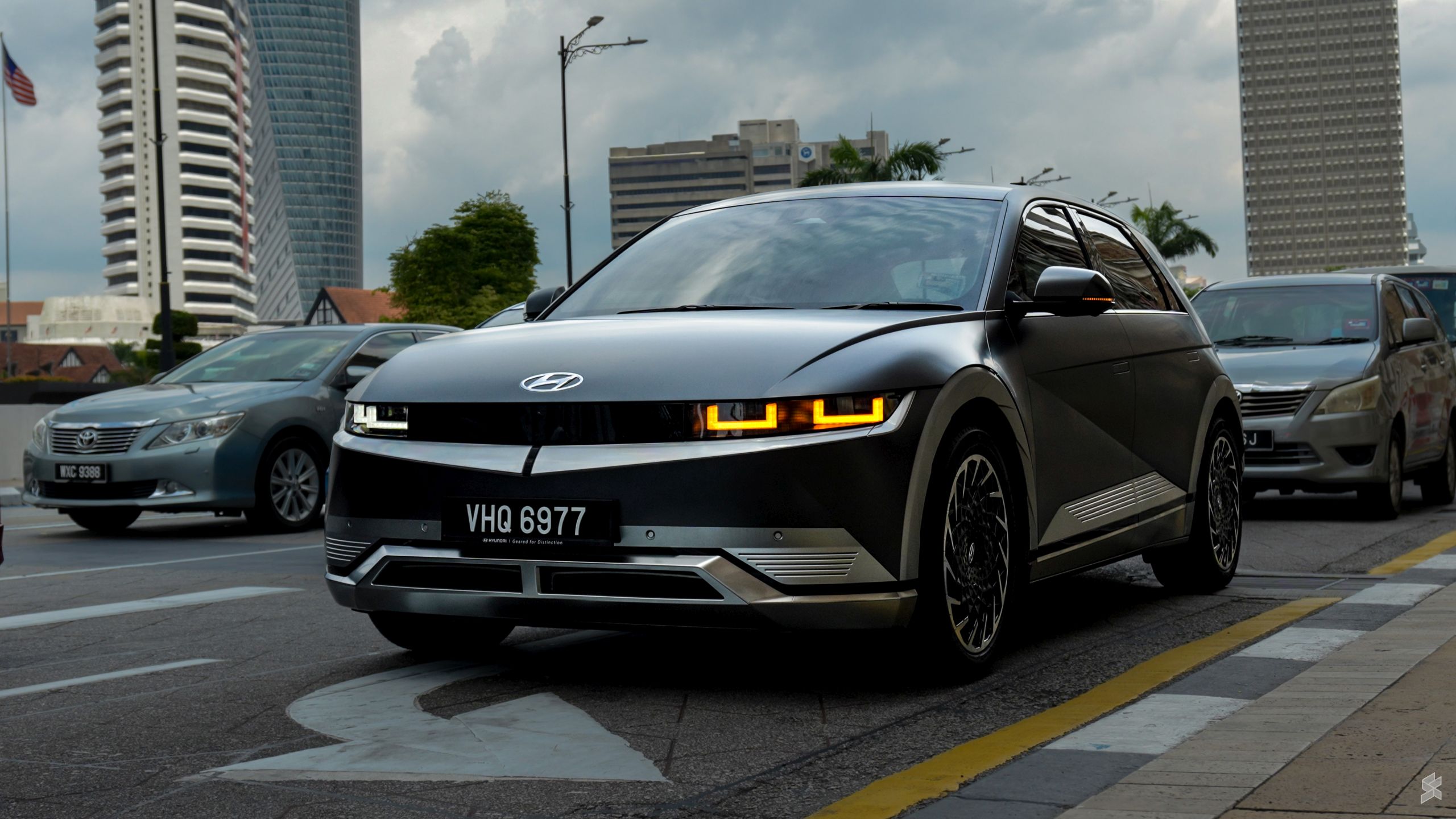Lately, we have seen a barrage of new electric vehicles trickling into the Malaysian market but most of them are merely “electrified” versions of their petrol equivalent models. The Hyundai Kona Electric is essentially a Kona with an electric motor, and it’s also the same formula for the Volvo XC40 Recharge Twin and the Mercedes-Benz EQA.
The Hyundai Ioniq 5, however, is built on a dedicated e-GMP electric vehicle platform. This means the car is designed from the ground up as an EV without making any compromises to accommodate an internal combustion engine system. Is it any good? Here’s our full review of the Hyundai Ioniq 5 Max.
Similar to the Kona, Hyundai-Sime Darby Motors (HSDM) is using tech naming conventions for each Ioniq 5 variant with Lite, Plus and Max. The car we got is the top-of-the-line Hyundai Ioniq 5 Max which is an AWD model with the biggest battery option. It has two electric motors pushing a total of 302hp and 605Nm of torque, and it could sprint from 0-100km/h in just 5.2 seconds. Onboard, it gets a 72.6kWh battery capacity which has a rated range of 430km on a WLTP cycle.
Unlike most EVs in the market that uses a 400V battery system, the Ioniq 5 uses an 800V architecture similar to the Porsche Taycan. This makes it future-proof to support even faster DC fast chargers.
Hyundai Ioniq 5 Exterior Design
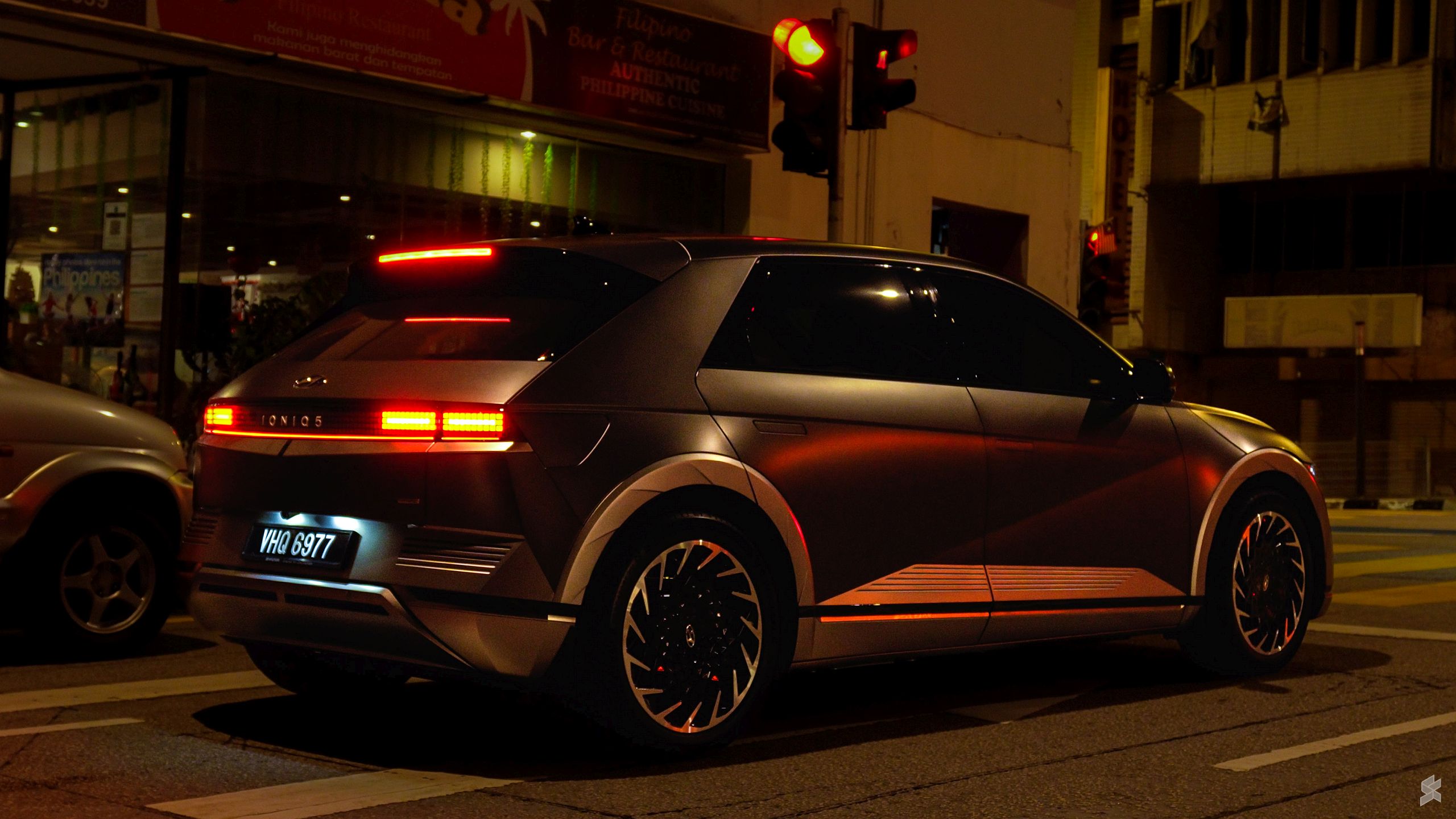
The Ioniq 5 gets a modern retro design which reminds me of the DeLorean from the 1980s movie, Back to the Future. With this Shooting Star Gray matte colour, it looks nothing like any other cars you see on the road today, and it’s definitely a head-turner. When I first saw this car in pictures, it looks like a compact hatchback but in reality, this is a massive crossover SUV.
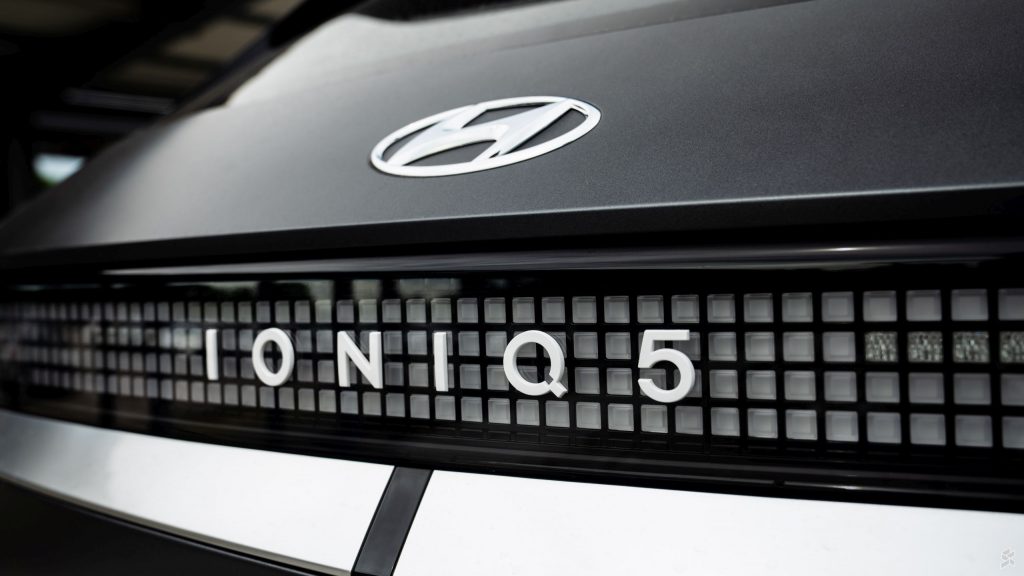
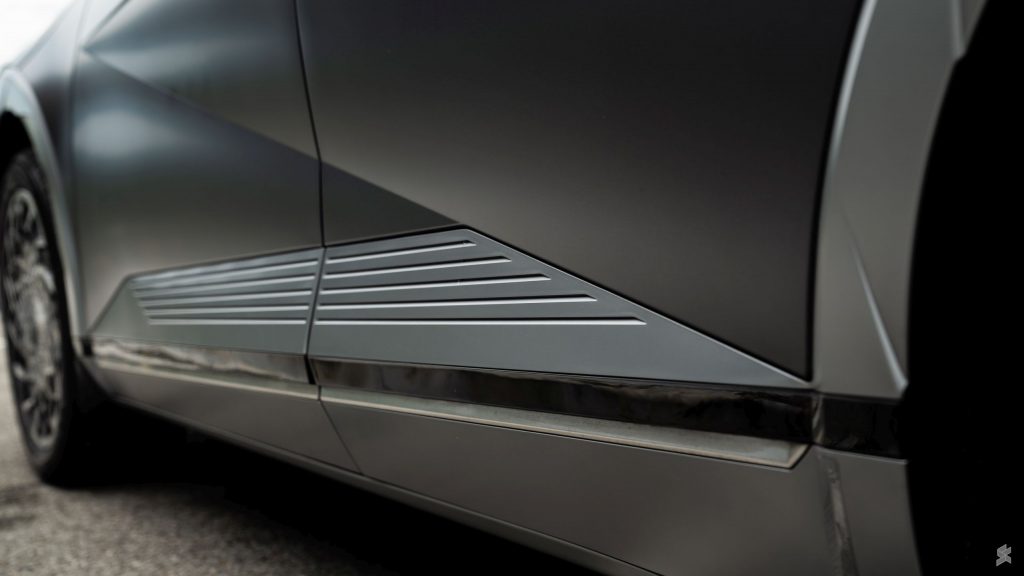
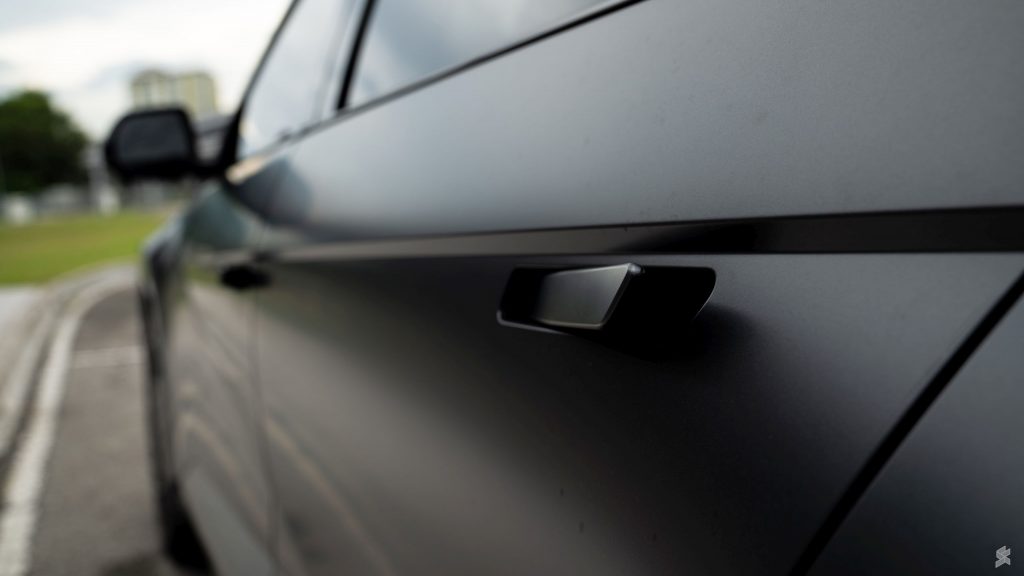
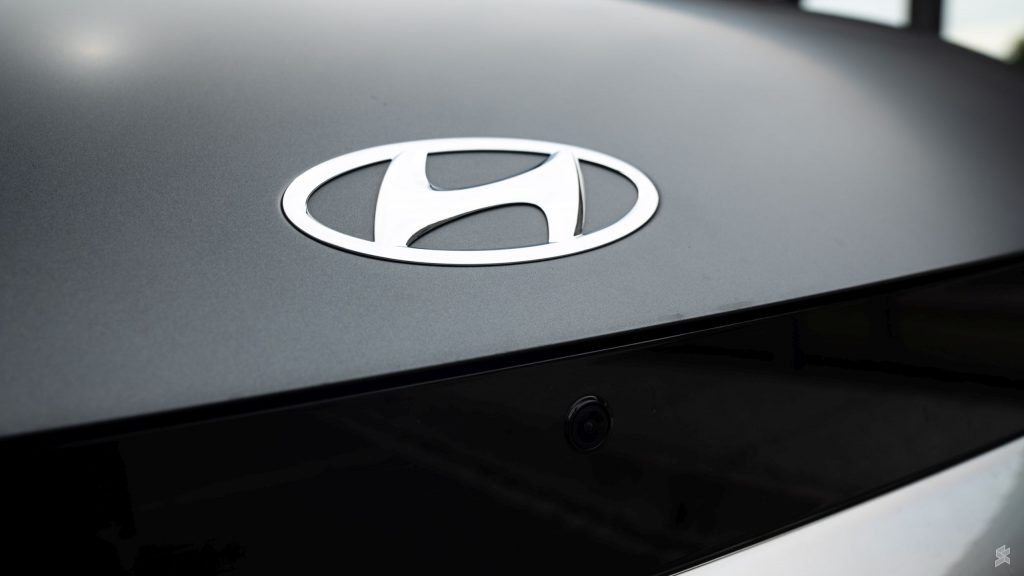
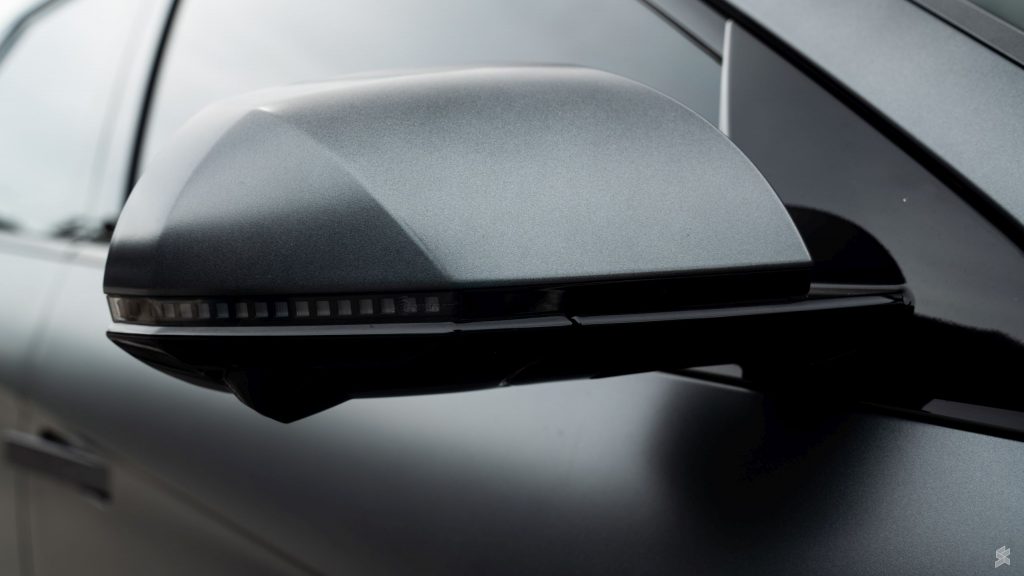
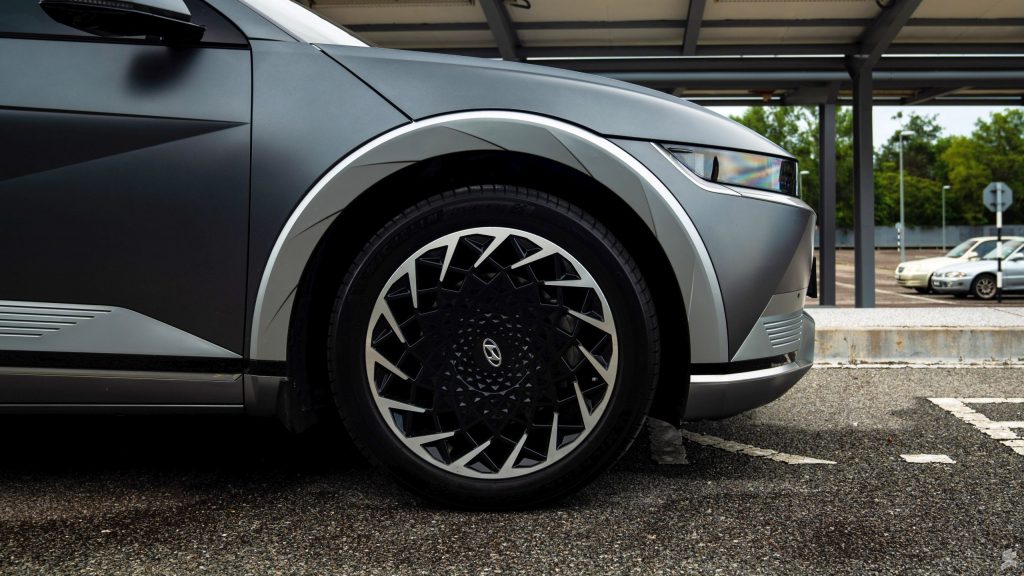
The Ioniq 5 has a long wheelbase of 3,000mm which is the same as the BMW iX, a much larger and premium SUV. As a comparison, the BMW X5 has a wheelbase of 2,975mm while the seven-seater Volkswagen Tiguan AllSpace R-Line 4Motion has a wheelbase of 2,789mm. On paper, a vehicle with a longer wheelbase should provide more interior space and a more comfortable ride.
It is also worth highlighting that the Ioniq 5’s more expensive sibling, the KIA EV6 also shares the same e-GMP platform but it has a slightly shorter wheelbase of 2,900mm. However, the EV6 is still longer overall and it has a shorter height for a sportier stance.
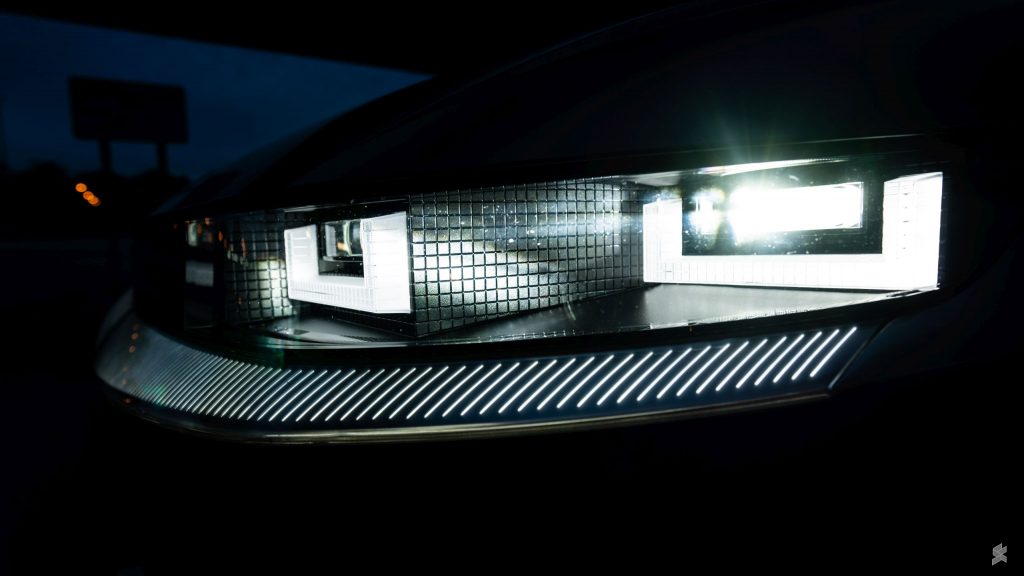
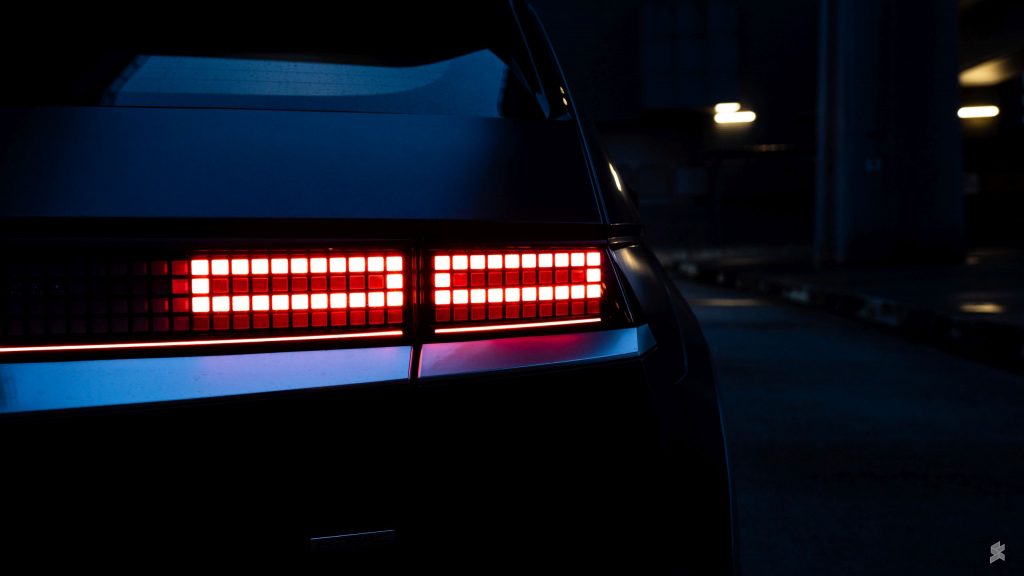
Hyundai has gone with a futuristic front with double square daytime running lights surrounding the LED headlamps for each side. On this top-spec Max model, you also get an extra array of thin lights which illuminates the entire length of the upper bumper.
Since this is a pure electric vehicle, you won’t need any vents or grills like a regular internal combustion engine car. However, the Ioniq 5 does come with an active air flap system located at the lower portion of the bumper, which opens up when you have the air conditioner running.
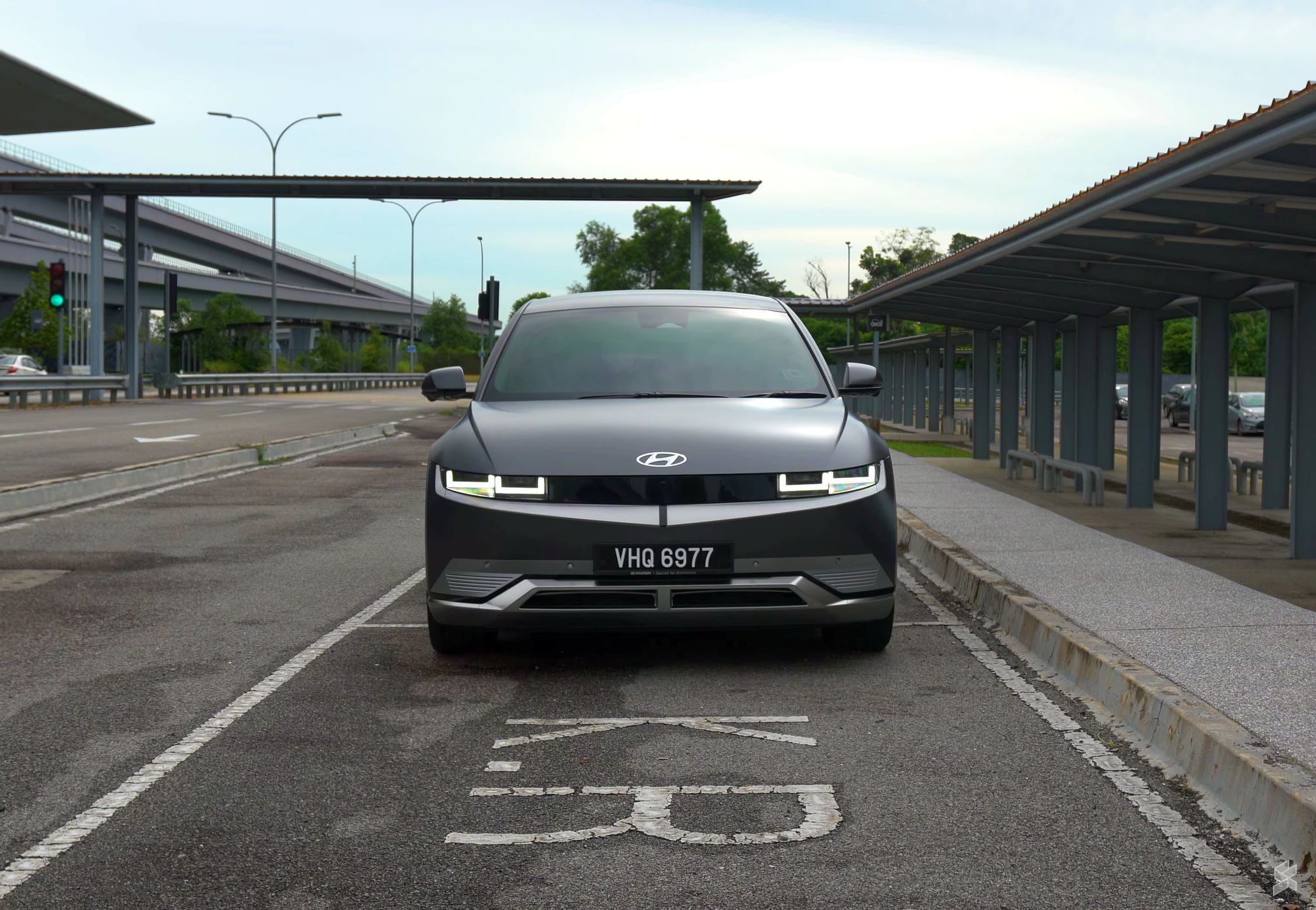
According to Hyundai, the air flap will close automatically to reduce air resistance. This results in better drag coefficiency which Hyundai claims could increase the range by about 7.3km per charge.
Despite being large in size, the Ioniq 5 with its aerodynamic design elements has an impressive Coefficient Drag (Cd) of 0.2888, which is much lower than the Volvo XC40’s Cd of 0.329. Although, it is worth pointing out that it is not as slippery in the air as the EV6 and EQA’s 0.28 Cd, the BMW iX’s 0.25 Cd and the Tesla Model Y’s 0.23 Cd. A vehicle with lower Cd means less air resistance, which translates to better energy efficiency.
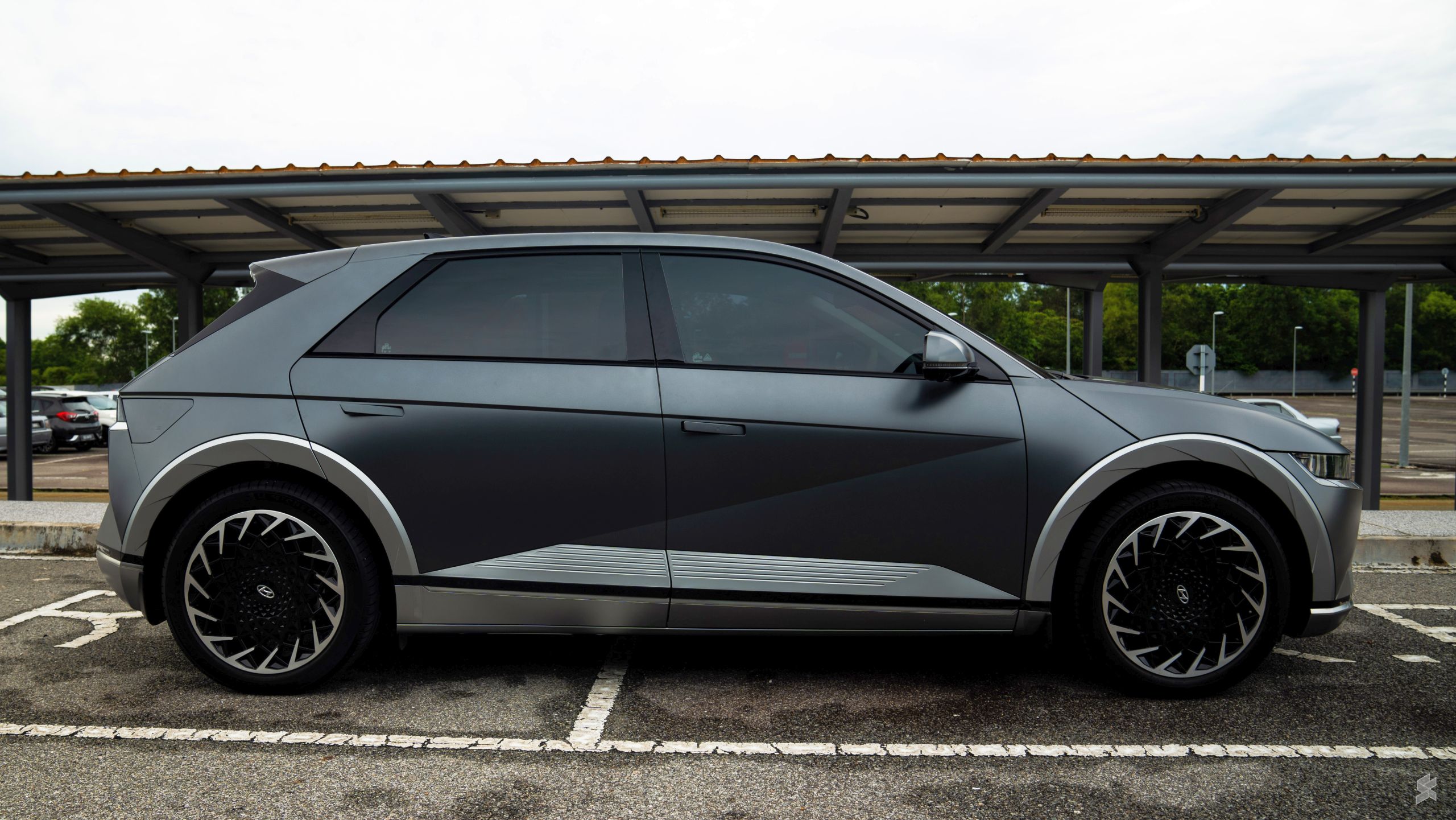
The top-of-the-range Max model gets 20” wheels wrapped with Michelin Pilot Sport EV tyres that are specially designed to reduce road noise. From the sides, it has a sleek-looking hatchback appearance with sharp Z lines. You also get flush door handles which pop up when the car is unlocked. To give it a more “SUV” look, it has extra silver cladding at the bottom portion of the doors as well as the wheel arches. Some might find these elements over the top but I think it looks great for a car that wants to look like it came from the future.
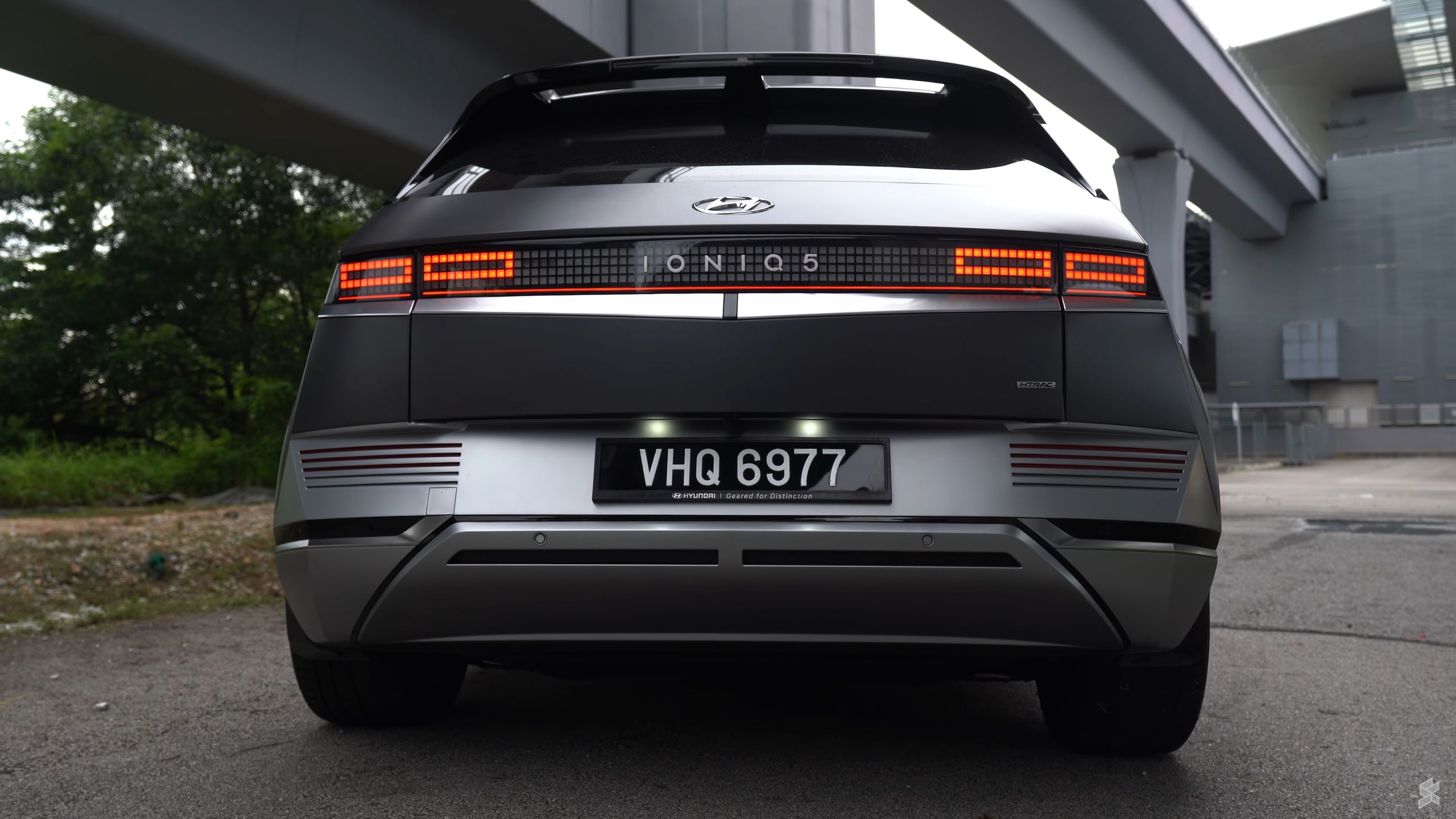
Moving at the back, you’ll find an array of pixels for its rear LED lights and there’s a fine strip of red illumination that runs across the full width of the car. The Ioniq 5 also gets a power boot which can automatically open when you stand close to it for a couple of seconds with your keys in your pocket. Instead of a sunroof, the Max model gets a solar roof which can help generate extra electricity. I think this choice makes more sense, especially in sunny Malaysia.
Hyundai Ioniq 5 Interior
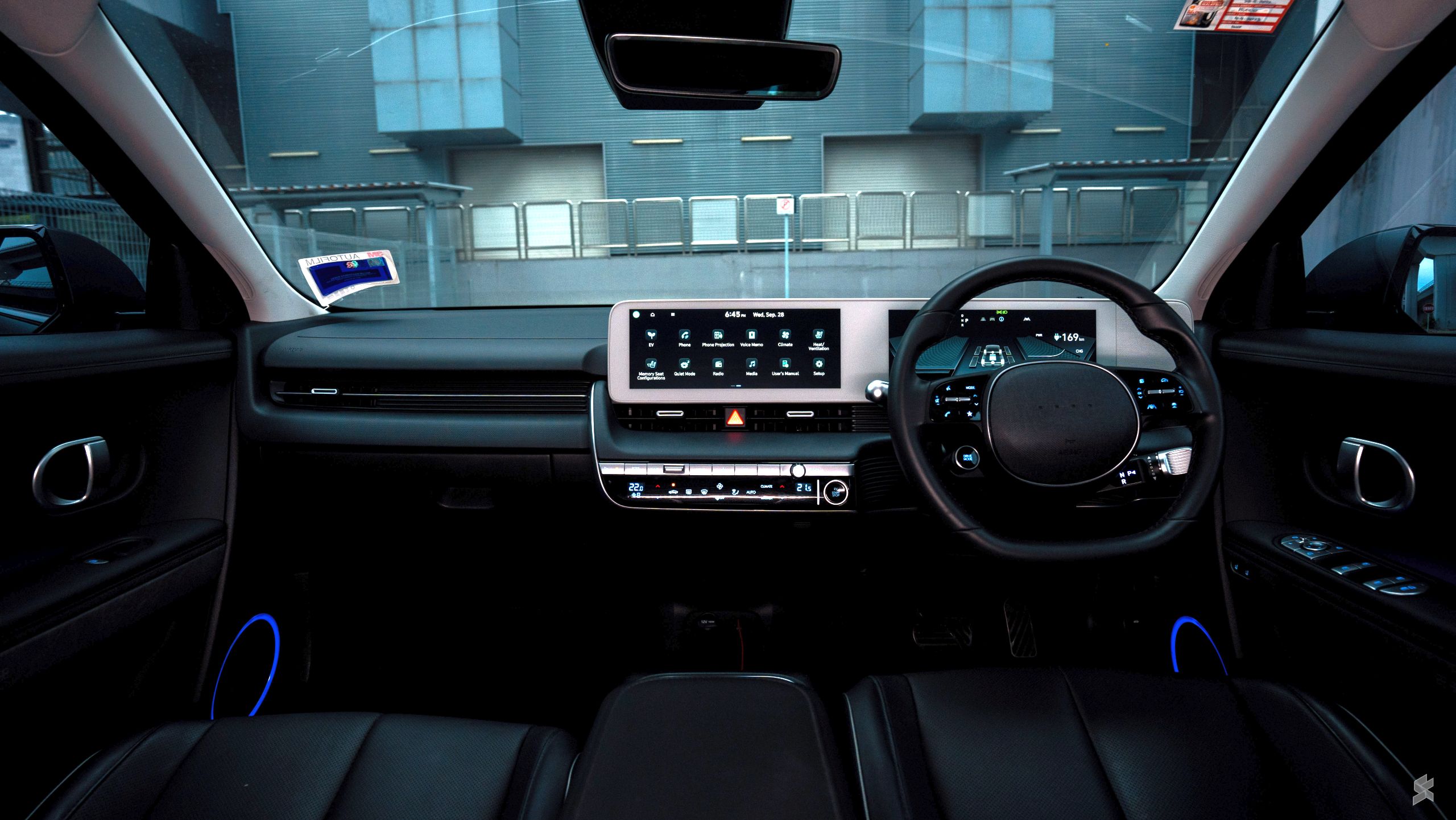
Stepping inside, you’ll find a huge contrast from its boxy exterior with sharp lines. The internal cabin has a more organic approach with more rounded corners and curvy elements.
Since the Ioniq 5 is built on a pure EV platform, Hyundai is able to make full use of the available space thanks to a flat floor which houses the batteries. It offers loads of legroom for both front and rear occupants, and the completely flat floor also means that you can squeeze a third passenger into the back row while still having space for their feet.
While the floor doesn’t feel deep enough for rear occupants, you can easily get into a more comfortable position thanks to its reclining seats. Unlike the smaller Hyundai Kona, can still tuck your feet underneath the seat in front of you. Another interesting plus point is that you can slide the seats back and forth electronically. To keep things cool, the Ioniq 5 has rear aircon vents mounted on the B-pillar and there are even retractable sunshades integrated into the rear doors.
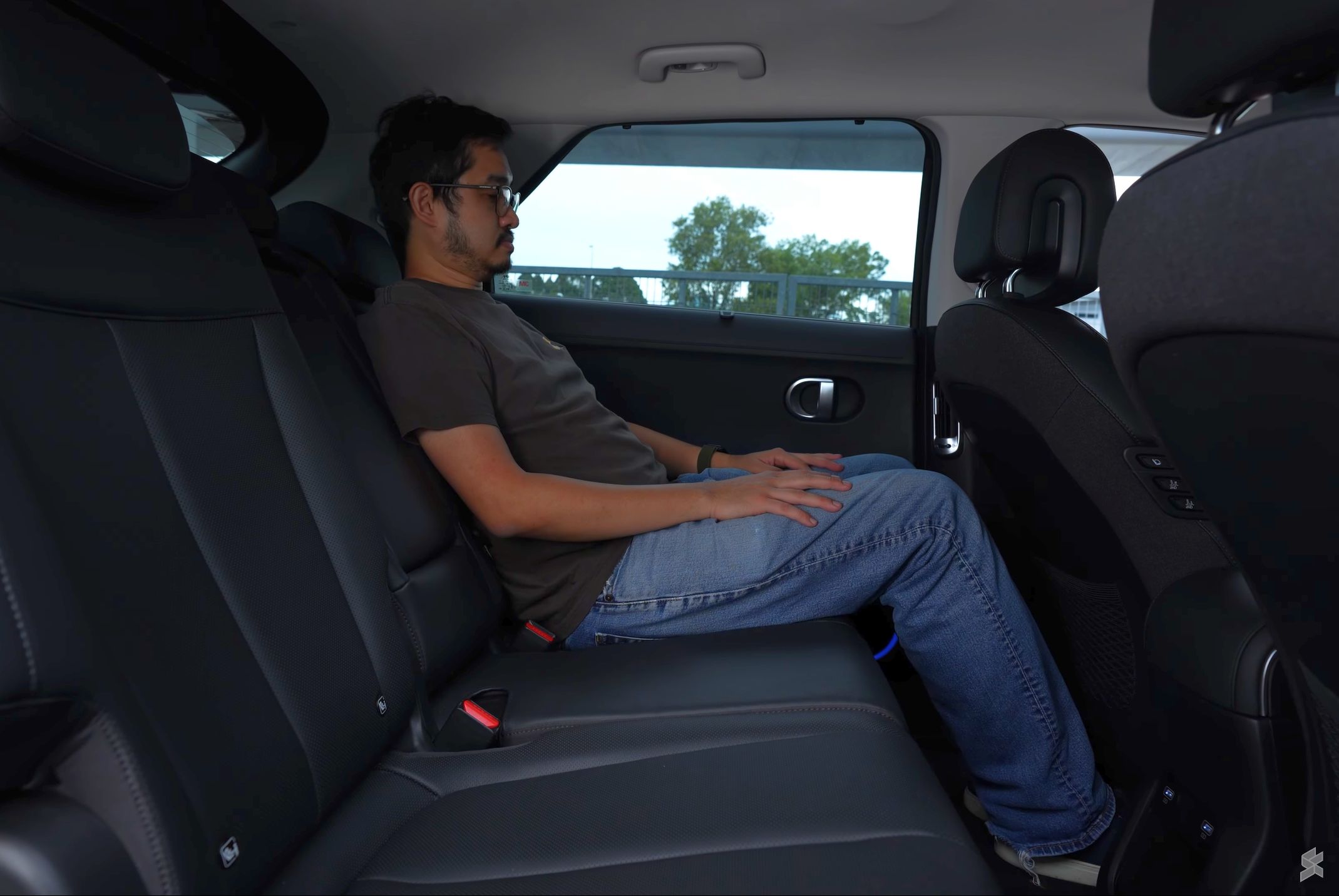
The overall interior feels well built together but I think it doesn’t feel as premium as the Tesla Model Y or the Volvo XC40. You still feel hard plastics around the dash and door trims which are made with sustainable materials. Like most manufacturers these days, Hyundai wants to go all out with its green ambition with the use of Vegan-friendly leather seats, materials that use recycled plastic bottles for its interior trim and bio-paint for its dashboard, switches and steering wheel. The bottom half of the interior uses hard plastics which looks cheap in this all-black interior.

Upfront, there are two 12.3″ displays which are similar to the Mercedes-Benz. The display quality is pretty good and you can also switch between light and dark modes. However, regardless of which interior trim you pick, the display bezels only come in white which looks ugly in my opinion. If you look at Apple, they have stopped making iPads with white bezels because black bezels do a better job of hiding the gaps around the display.
The infotainment display has a very easy-to-use interface and the on-screen navigation buttons look very Android-ish. You can find most of the settings here and view the power usage along with the estimated driving range if you have the aircon turned on or off. The Malaysian models don’t come with satellite navigation built-in, so you’ll have to rely on Google Maps or Waze through Apple Car Play and Android Auto.
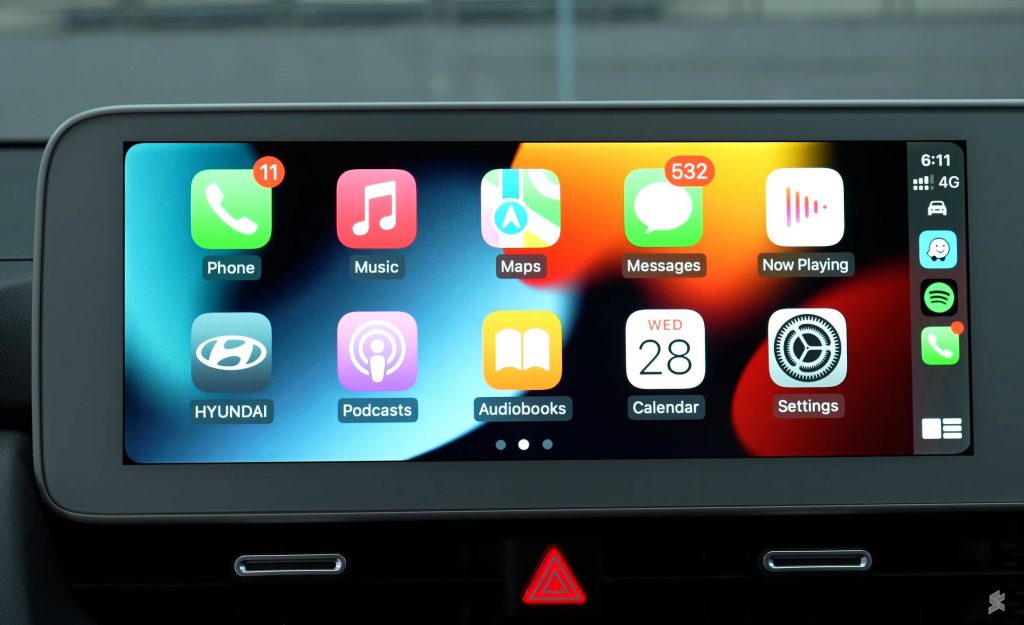

While the older Kona Electric has support for wireless Apple Car Play, the Ioniq 5 strangely only supports wired Apple Car Play and Android Auto. What’s even more surprising is that the Ioniq 5 uses USB Type-A for all five of its USB ports. Hello… It’s 2022! Most smartphone makers including Samsung and Apple are only bundling USB-C cables for their smartphones. It’s time to move on to USB-C ports for charging.
While Apple Car Play works well and could take advantage of the entire 12.3″ display, the Android Auto experience seems to be compromised. The interface feels very sluggish and it could only fill up 2/3 of the entire screen.
There’s also a 360-degree camera which is useful while parking but the stitching between the camera images could have been better. Unfortunately, you can’t play YouTube or Netflix on the screen like the Telsa Model Y, while the Bose sound system isn’t great but just ok. It does come with a couple of gimmicks to help you relax while charging, like the sounds of the ocean, rain or even a coffee shop.
One of the biggest highlights is the clever Universal Island centre console with integrated cupholders, two USB ports and a wireless charging pad. You can slide this forward or backward and it is useful if the driver needs to exit the car from the passenger side. Another practical feature is that the centre console has a large open compartment under the armrest which is great to store your handbags or bulkier items.
Another neat design is the glove box, or should I say a glove drawer. Instead of a drop-down door, the glove box slides out and it is much deeper than your average glove box.
The Ioniq 5’s door trim is also well-designed and you have this hidden gap which runs through the entire length of the door which functions as the door handle. You can put more than two phones here and the gap is illuminated with customisable colours. Despite the ample amount of space, I find the Ioniq 5 lacking when it comes to small cubby holes and compartments to hold smaller items like cards, tickets, SmartTAG, coins and sunglasses.

Another neat quirk on the Ioniq 5 is a magnet pad on the right side of the instrument cluster. At first glance, it looks like a speaker but it is actually a pad to which you can attach various magnetic accessories like a fridge magnet, hook or a custom magnet-based phone mount.
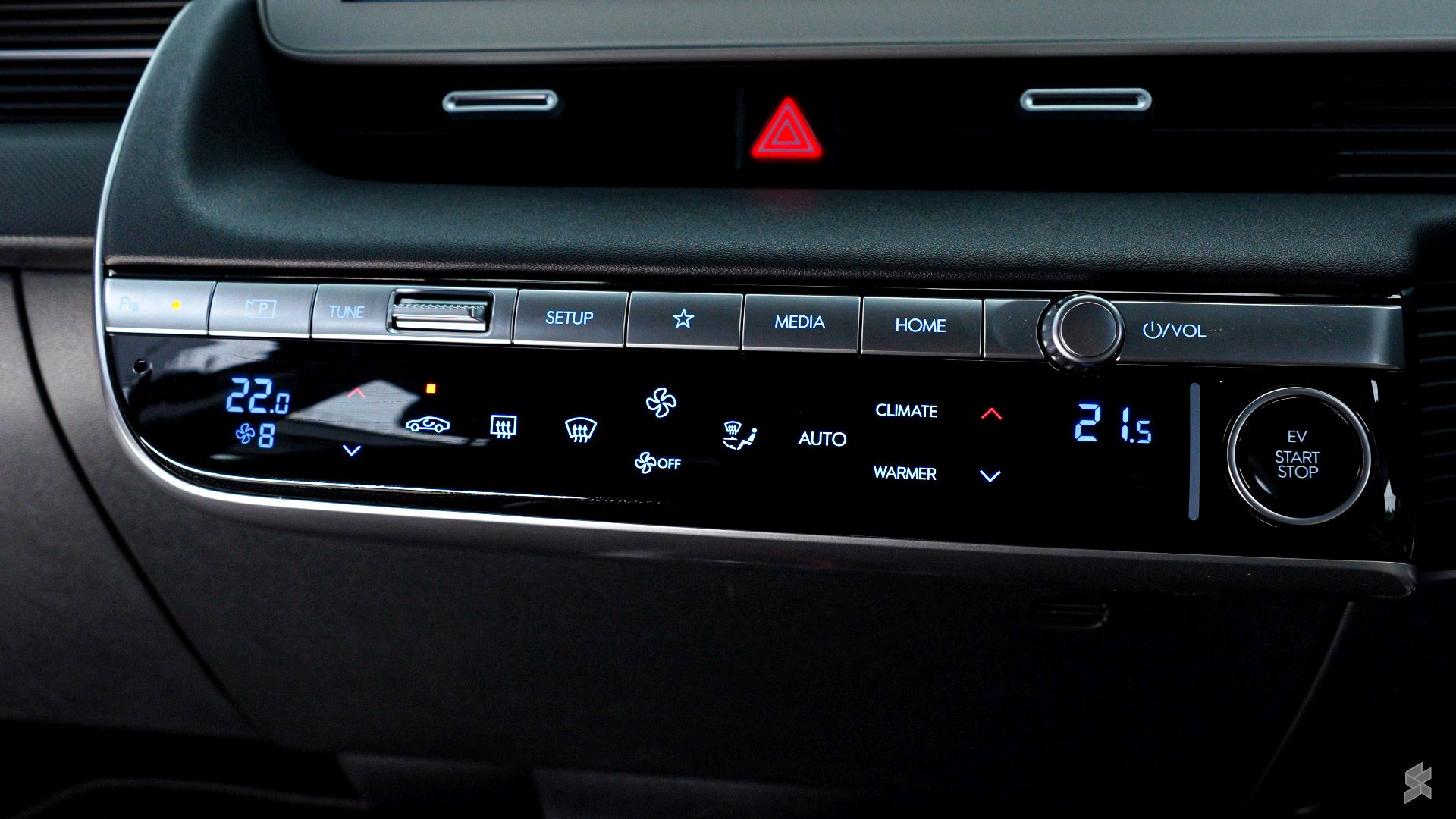
Unlike the new Tesla Model Y which has a large tablet screen to control all the car features, Hyundai has still retained most of the dedicated car controls around the dashboard. The aircon vent direction can be adjusted manually and there are physical buttons and dials for the radio and media controls.
There’s also another row of physical controls for the dual-zone climate control but they are all touch-operated which isn’t my favourite. I would still prefer physical buttons and knobs, but at least it is still better than having the aircon controls buried deep in the infotainment screen.
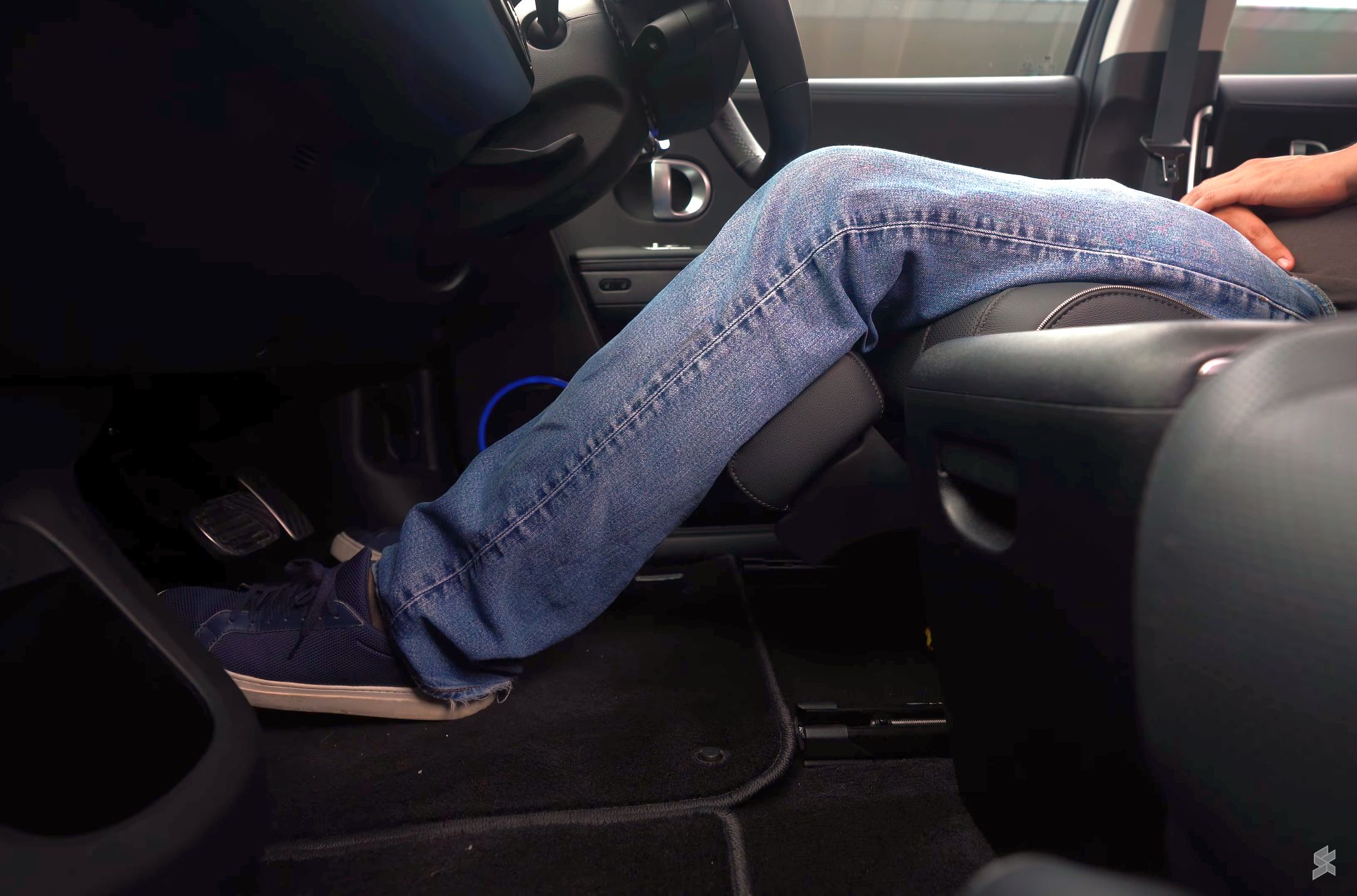
The Ioniq 5 Max also features power seats for the front that comes with additional lower-leg support. If you need to take a break while charging the car, there’s even a relaxation mode that turns the driver’s seat into a comfortable lazy chair with a single button. Hyundai has also added ventilated and heated seats for the front, but you can only activate them from the touchscreen panel.
Interestingly, rear occupants get heated seats and they can turn it on with a two-step dedicated button on the door handle. It’s baffling why can’t Hyundai offer the same physical controls for heated and ventilated seats for the front.
Since this car has a Universal Island, Hyundai has moved the parking brake and gear selector towards behind the steering wheel. You’ll get this gear selector stalk below the wiper controls which you twist to move between Reverse, Neutral and Drive. It takes a while to get used to but what’s neat is that the car will automatically shift to Park when you open the driver’s door during stationary. Meanwhile, the electronic parking brake switch and auto hold button are placed on the lower part of the dashboard.
Ioniq 5’s storage situation
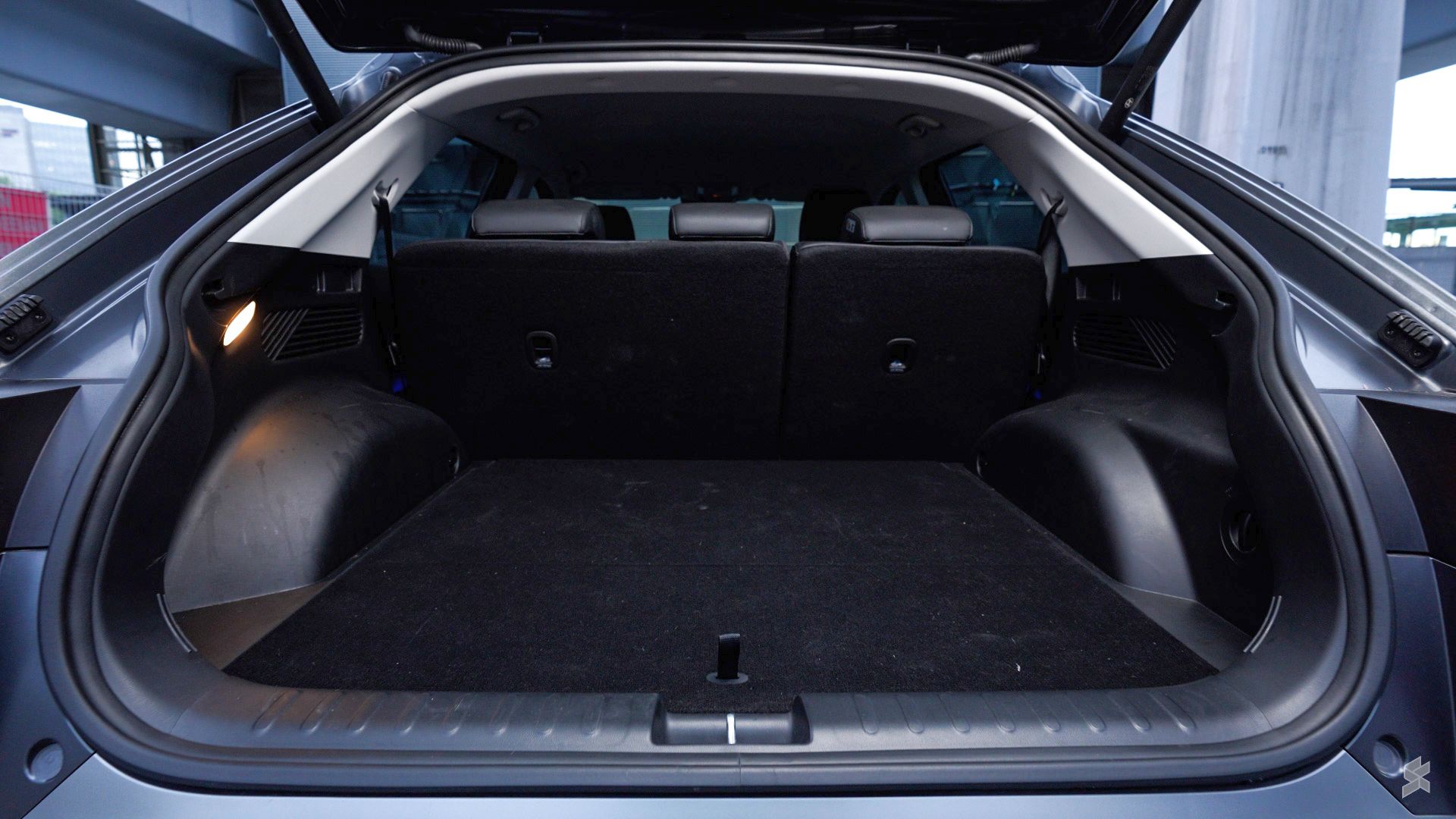
The Ioniq 5 gets a rather large boot with 527 litres of space but it’s not as practical as it sounds on paper. The boot isn’t deep enough for my liking and the underfloor storage for this Max model is restricted by a hump in the middle which houses the subwoofer. You could only store small items like the V2L adapter under the floor, and probably the charging cable behind the subwoofer hump. The tonneau cover with the extended flap can get in the way if you have taller items and annoyingly, there’s no proper way to keep it in the boot when it is not in use. Another thing to take note of is the lack of a spare tyre and all you get is a tyre repair kit.
If you need to carry more stuff from your IKEA shopping, you can fold the 60:40 split rear seats down to get almost 1,600 litres of space. However, there’s no easy way to fold the rear seats down as you’ll have to go over to each side and turn down the individual seats manually.
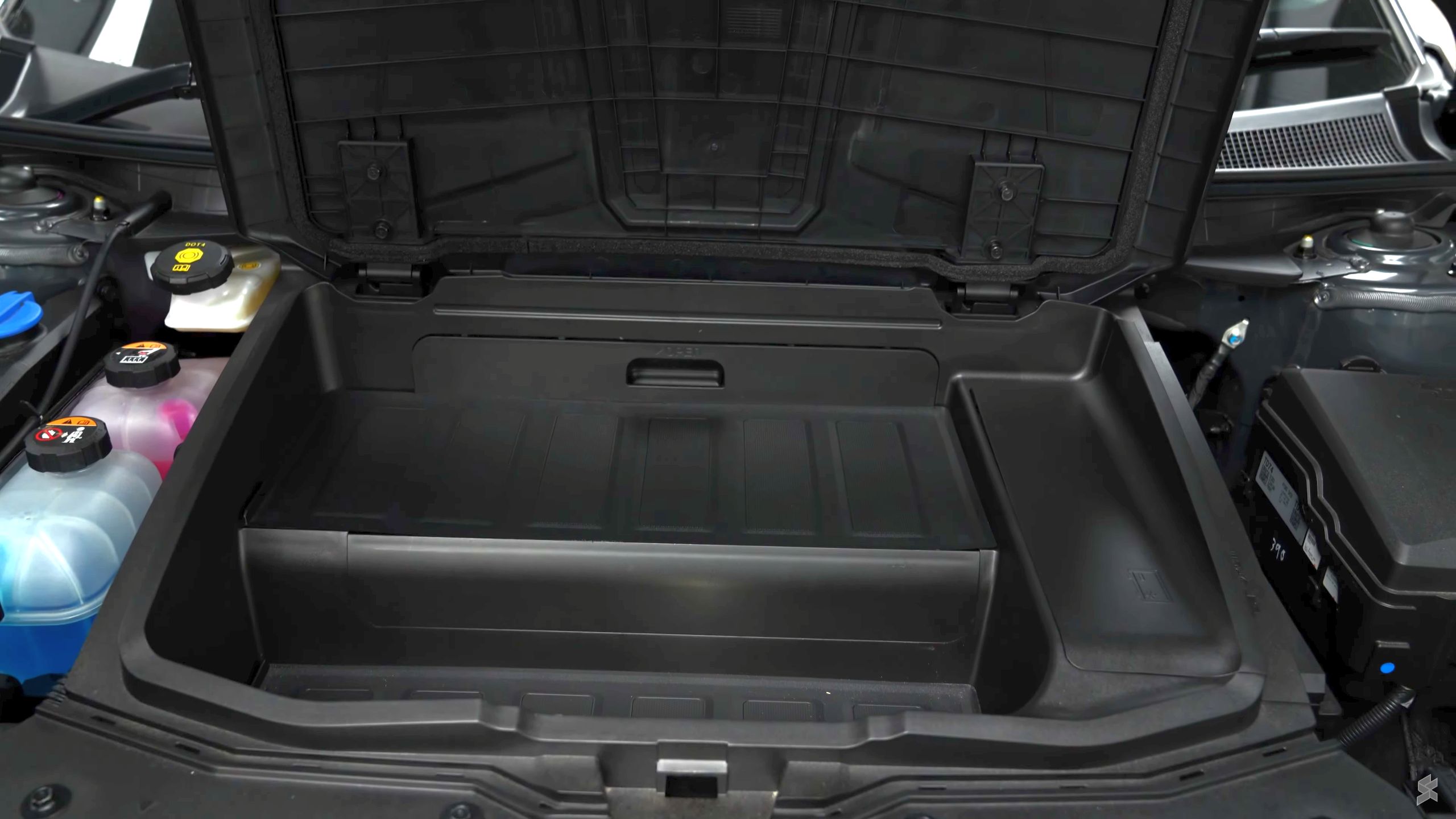
Since this is an EV, Hyundai has also added a frunk at the front which you can use as extra cargo space. However, the front storage is quite useless with around 24 litres of capacity and it’s made worse because of the odd shape due to the front electric motor. This is where the Tesla Model Y excels as the frunk has over 100 litres of space which you can use to store a backpack.
Other things that I don’t like
Besides the lack of USB-C ports and no wireless Apple Car Play, another complaint that I have is the lack of a rear wiper. This can be an issue during rainy days or when driving on a dusty road. It appears that Hyundai is mitigating this issue by adding a “Digital Centre Mirror” which will display a video feed from the rear spoiler camera on their upcoming 2023 model.
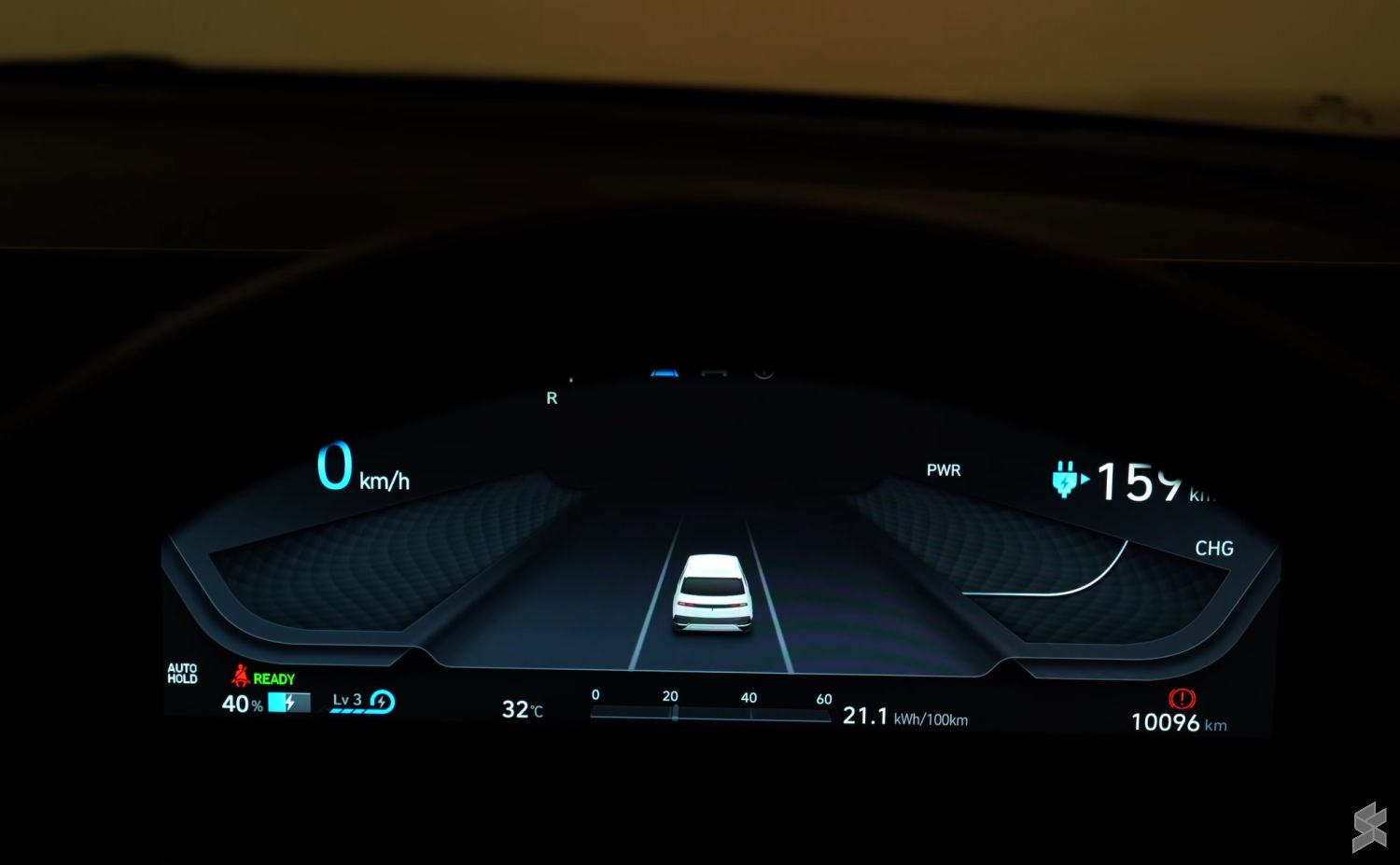
Although the digital instrument cluster is sharp and vibrant, some of the information like which gear you’re in, your current speed and the remaining range available are partially blocked by the steering wheel if you’re sitting high up. In some markets, the Ioniq 5 has a head-up display (HUD) but it is not offered for the Malaysian models. Hopefully, HSDM would add this in for their 2023 models since the Hyundai Kona Electric e-Max in Malaysia comes with a HUD display.
Ioniq 5 Charging Experience in Malaysia
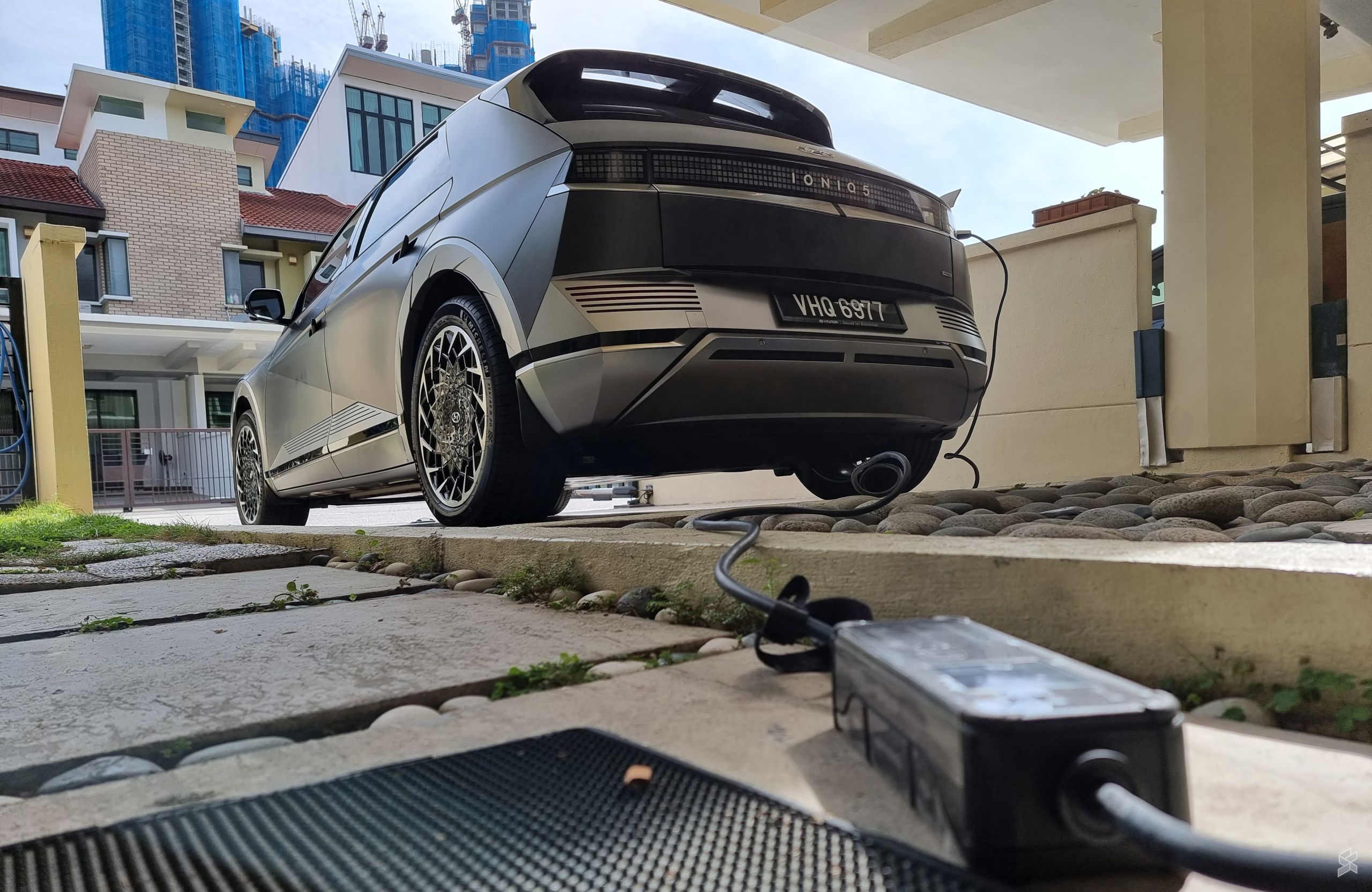
There are a couple of ways to charge the Ioniq 5. If you don’t have access to a wall charger, Hyundai has included a 3-pin home charger which can switch between 6, 8 and 10 Amps. The Level 1 home charger works better than expected and I could get a 2.2kW charge when the adapter is set at 10Amps. With 8 hours of overnight charging, I got a 20% charge (60-80%) which adds about 100km of range. That’s pretty decent for emergency use or if you drive less than 60km per day.
However, it is recommended to get a Level 2 AC wall box charger that pushes at least 11kW for your home. According to Hyundai, an 11kW charger can provide a full charge in 6.1 hours, so you can start your day with a full battery if you plug it in every night.
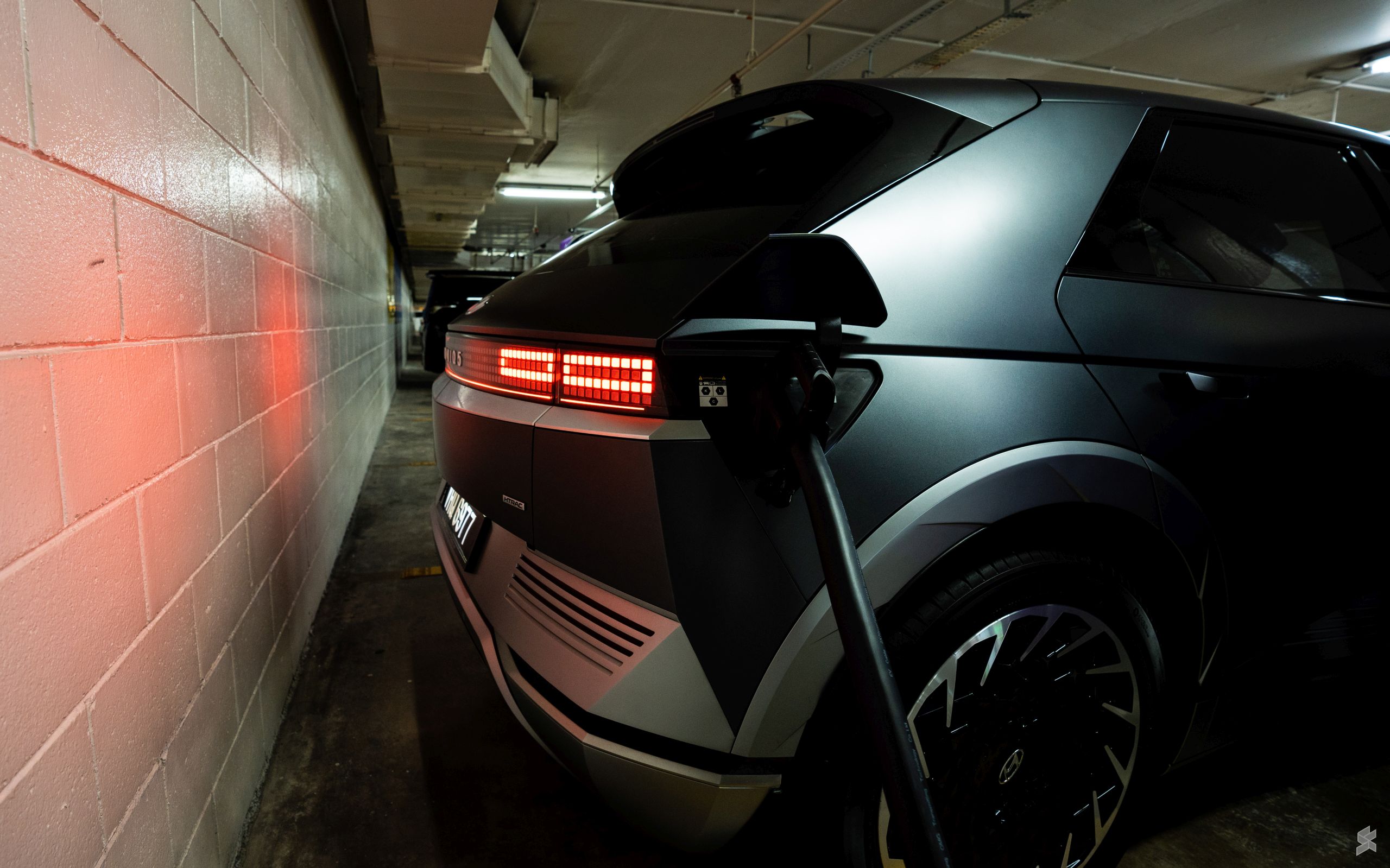
If you need faster charging, you can hook up the Ioniq 5 to a public DC fast charging station. Gentari, a green energy company under Petronas has recently deployed dozens of EV chargers at Suria KLCC including two 60kW fast chargers at Level P4. You can activate the charger via the Setel app and we got 60kW when the charger is connected to just one vehicle. 35% to 80% charge took just 32 minutes which is heaps faster than AC charging.
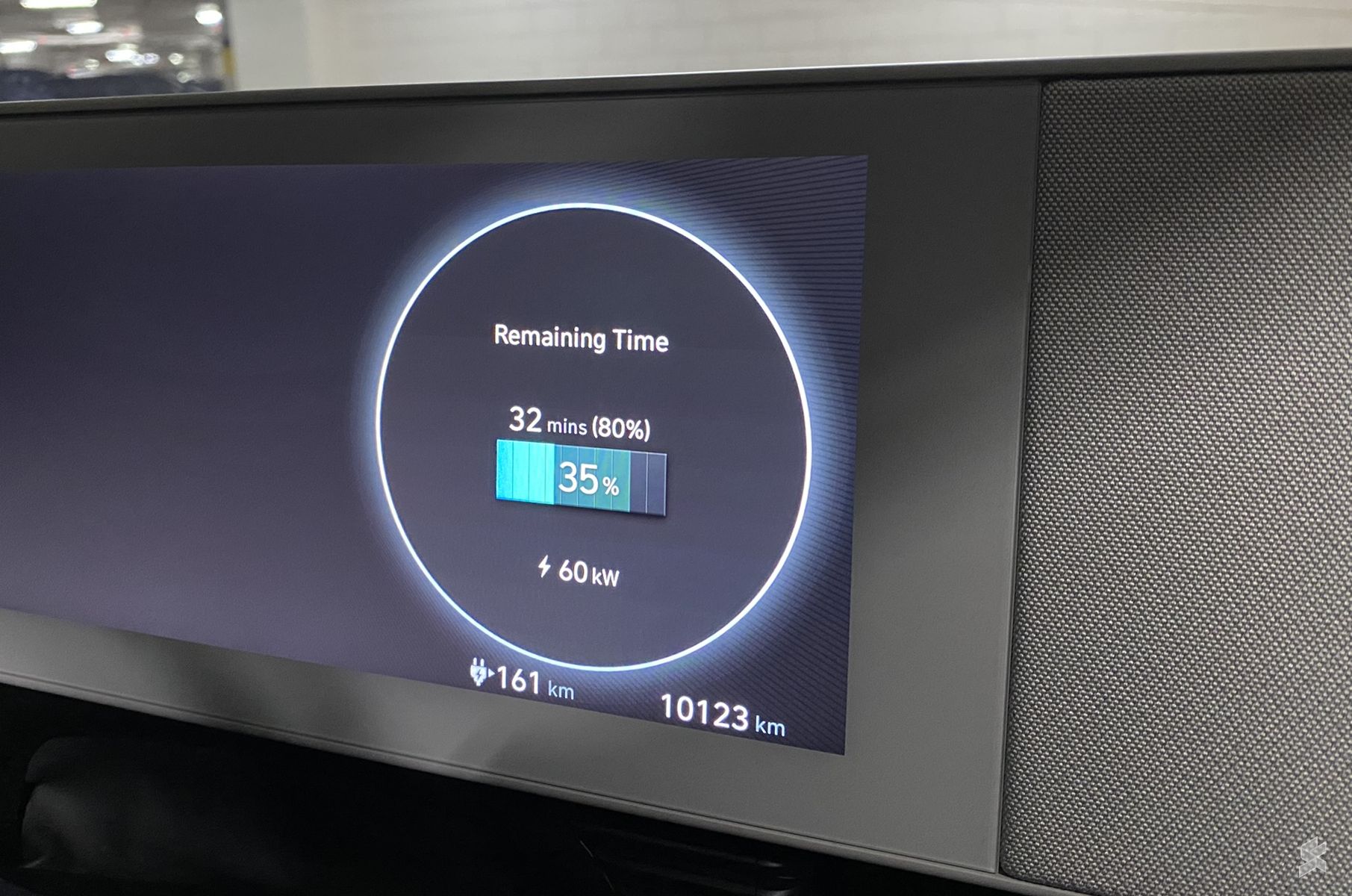
At the time of our review, the Gentari chargers were free of charge but they have started charging 60 sen per minute effective 1st October 2022. DC Fast charging is the best way to juice up the battery quickly but do note that the EV charging rate usually slows down dramatically after 80%. So for the best charge for your buck, you can limit DC charging to just 80% through the vehicle’s settings.
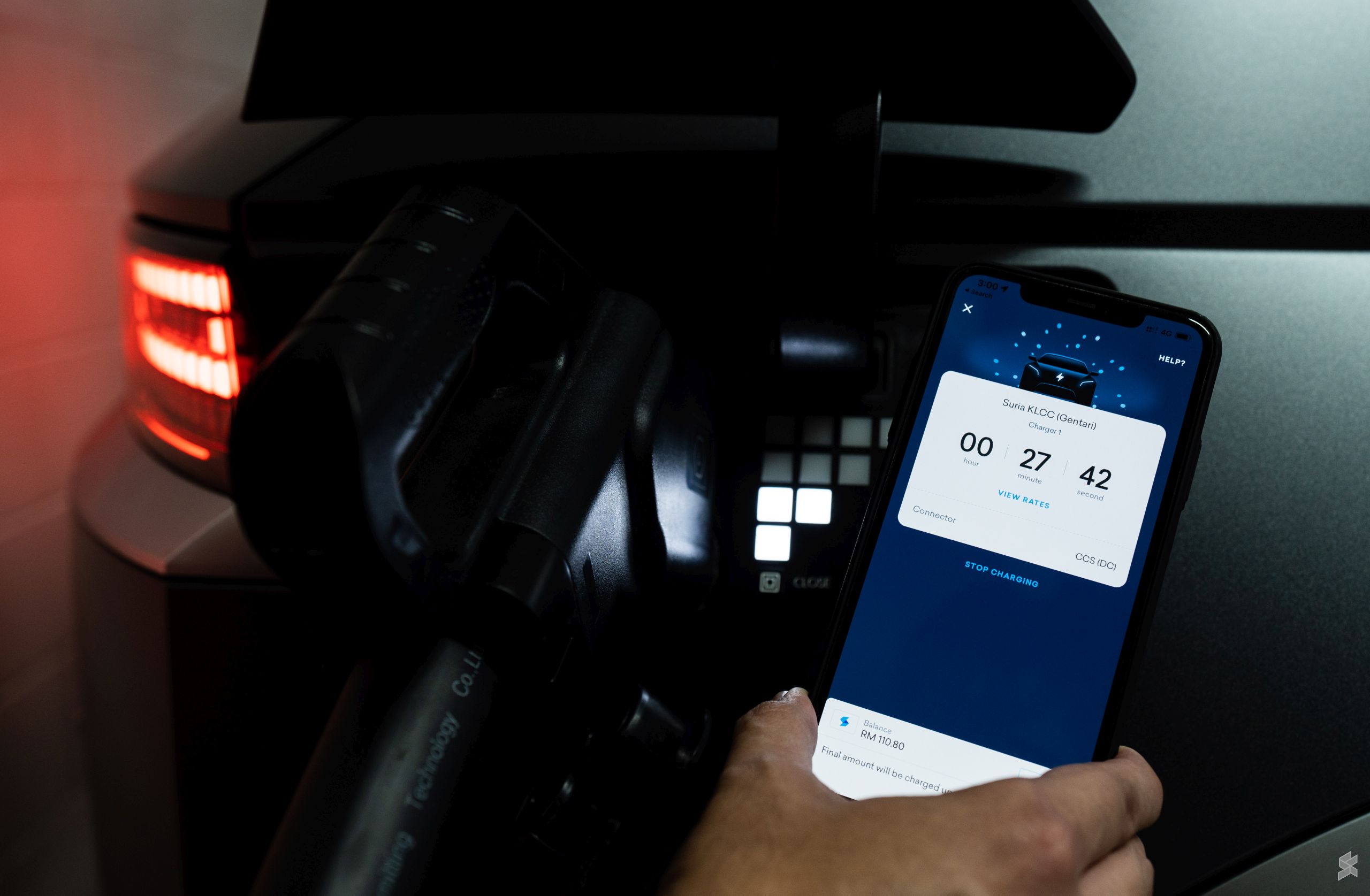
As mentioned earlier, the headlining feature for the Ioniq 5 is its ability to support up to 350kW DC fast charging which isn’t available yet in Malaysia. If you could find one, the Ioniq 5 can get an insane 10-80% charge in just 18 minutes. This is made possible by its 800V electrical system which is similar to the Porsche Taycan. A higher voltage architecture allows the car to charge at a lower current (Amp). This would translate to greater charging efficiency as it has less heat and power loss through the cables.
If you travel interstate a lot, charging an EV on the go can be an issue. Looking at the current state of public EV charging infrastructure in Malaysia, you would definitely need to plan your EV trip ahead to anticipate possible issues with charging stations along the way. Malaysia is still in its infancy stage when it comes to EV adoption and we still don’t have enough DC fast chargers along major highways and interstate roads nationwide. The good news is that this is a problem that can be solved but it would take some time.
Contrary to popular belief, electric vehicles are actually better suited for our warm climate compared to countries with cooler weather. Not only does the battery discharge quicker in cold weather, but charging would take a long time as the batteries would need to warm up before they could reach optimal charging speeds.
Ioniq 5 Driving Experience
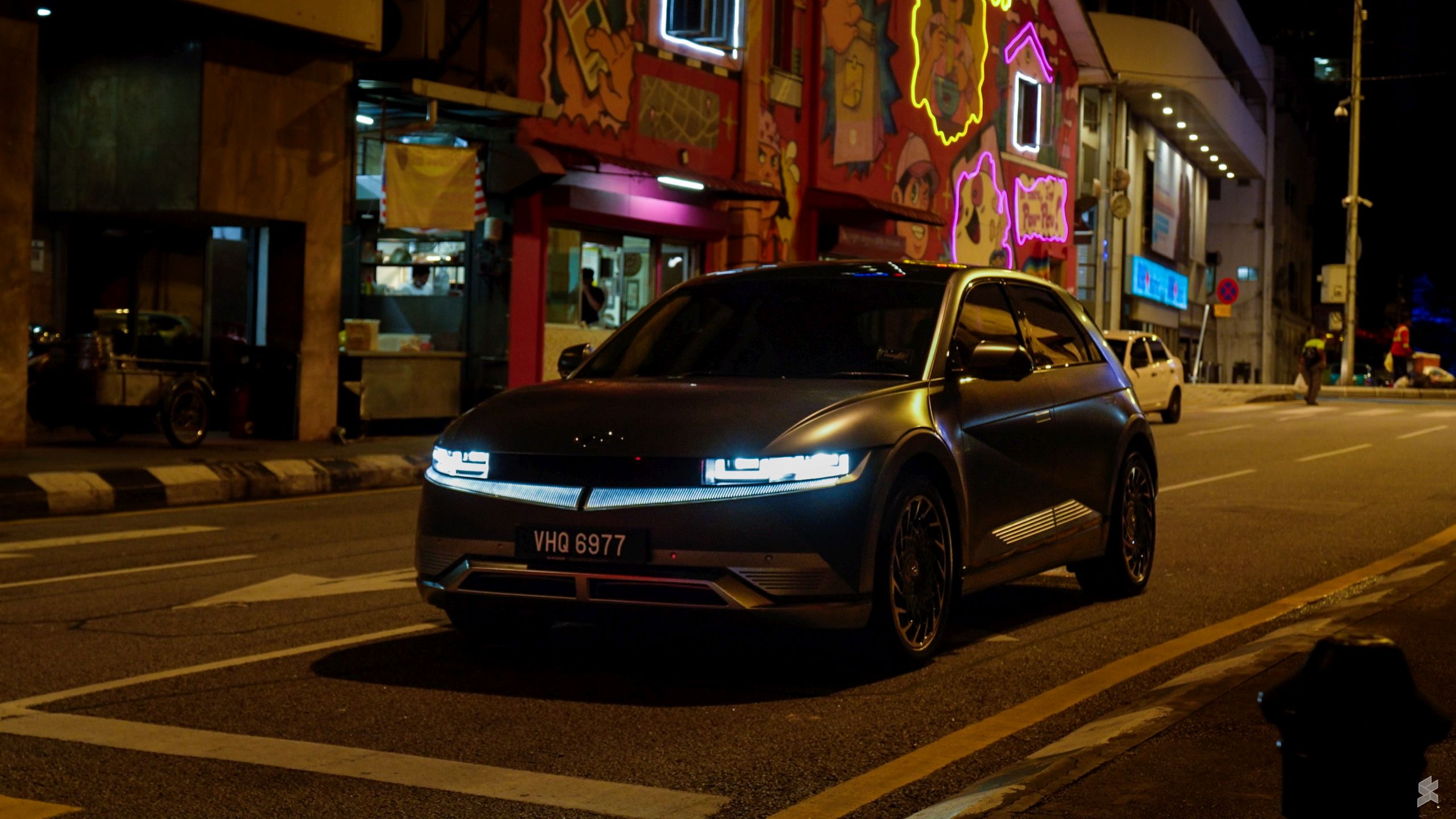
Getting behind the wheel of the Ioniq 5, you’ll notice right away that this is quite a large vehicle. If you’re still paying for tolls using a TNG card, you’ll have to be wary about not scraping the rims at the toll booth. Fortunately, Hyundai has included an array of safety and advanced driver-assist features such as lane keeping and lane centering assist to keep you in control. My only complaint is the blind spot monitoring feature which tends to be overly sensitive but it’s there for a good reason.
What I do like is the blind spot view monitor feature which projects a video feed from the sides of the vehicle when you turn on the signal indicator. This is somewhat similar to Honda’s LaneWatch but you get it from both left and right, and it shows up on the instrument cluster which is a better placement. As would you expect from a well-equipped vehicle, it gets a total of 7 airbags, autonomous emergency braking with pedestrian and cyclist recognition, smart cruise control with stop and go, and rear cross-traffic collision avoidance assist.
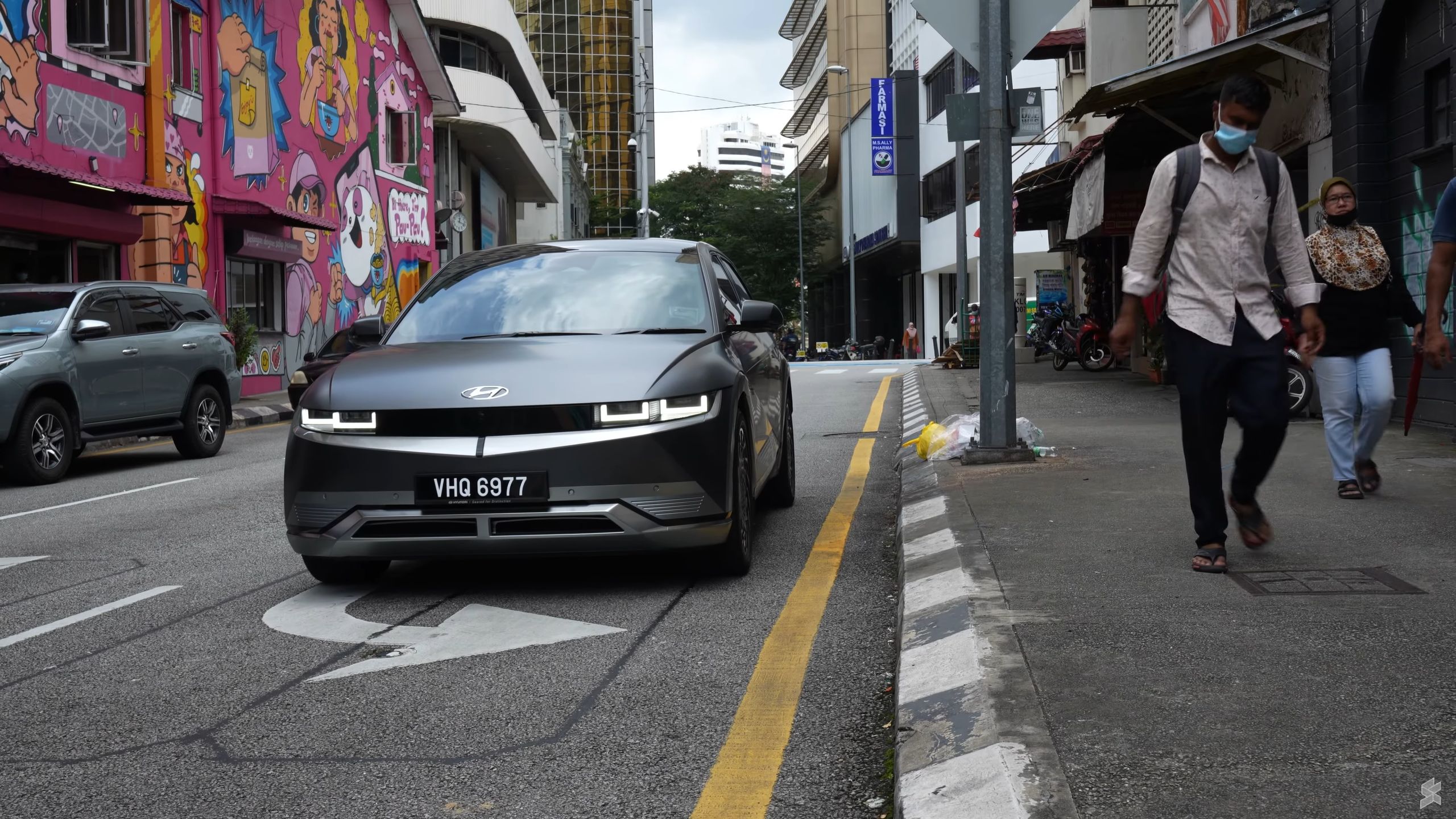
Unlike other EVs like the Volvo XC40 EV and the Tesla Model Y, the Ioniq 5 has a much more comfortable ride. The Model Y might feel sporty to drive but the suspension is just too stiff and it’s not any better with the Volvo XC40. The Ioniq 5 soaks up road imperfections relatively well, making this the better EV to carry passengers. The Ioniq 5’s acceleration is crazy quick and before you know it, you’ve hit 100km/h merely seconds after coming out from the toll plaza. The power delivery is so smooth as the electric motors can deliver maximum torque from the get-go.
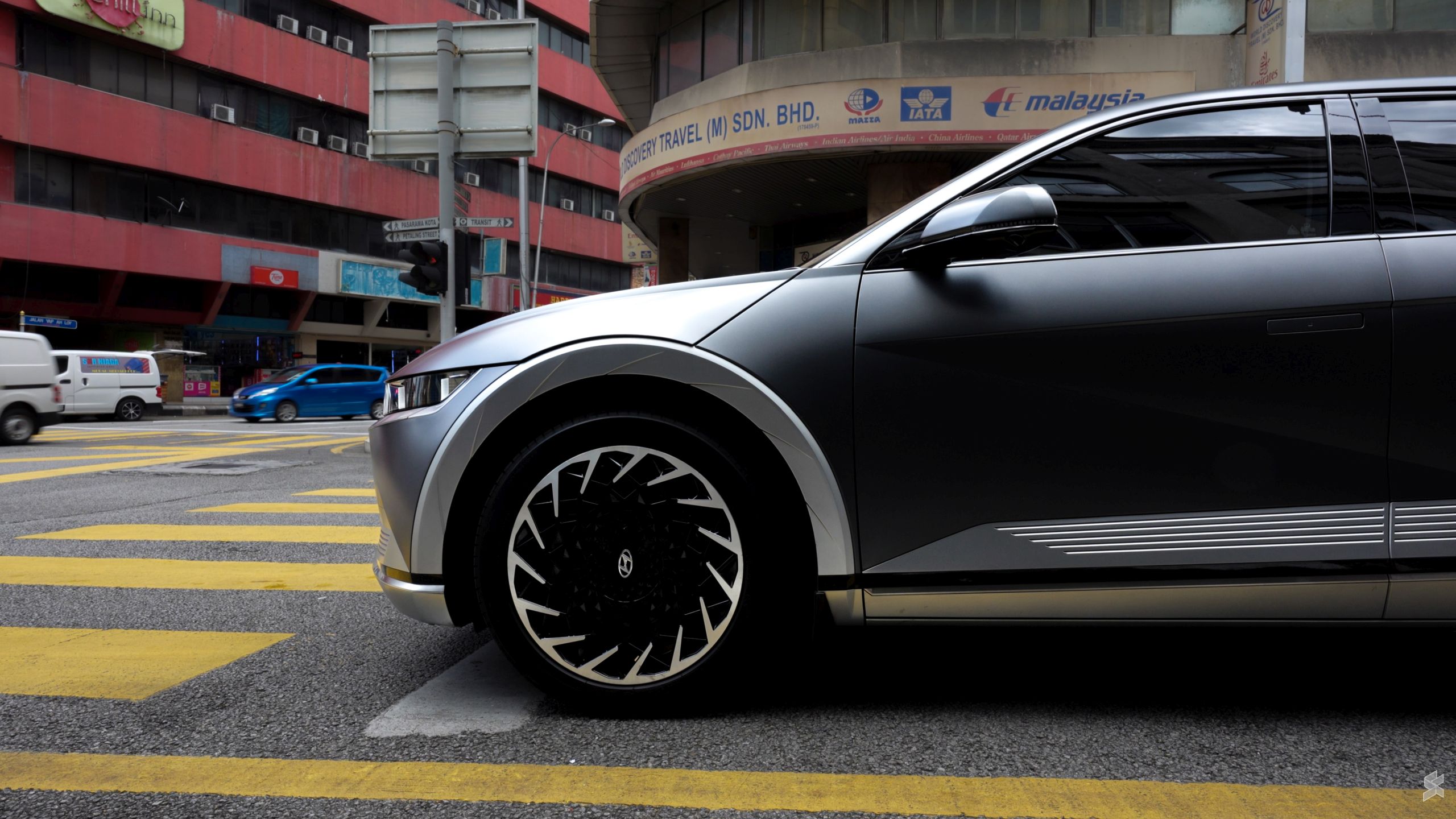
In total, there are four modes – Eco, Normal, Sports and Snow, which can be toggled from the drive mode button on the steering wheel. For most driving, Normal is quick enough and it occasionally uses the front motors when it is required. Sports mode provides the maximum power as it runs on AWD full-time, while ECO is primarily rear-wheel drive for better range.
The best thing about driving an EV is regenerative braking and the Ioniq 5 makes it super easy to adjust the regen levels through the paddle shifters. My personal favourite is i-Pedal mode which is essentially a single-pedal mode that allows you to accelerate and slow down the car with only your right foot. Once you master i-Pedal mode, it provides the most seamless driving experience especially when you’re stuck in a traffic jam. After using this mode for a while, it seems that this mode really encourages you to be a more efficient driver as you would anticipate the traffic conditions ahead to regulate the pedal accordingly.
The benefit of regen braking is that you can recoup the lost energy from the wheels back to the battery for a more efficient drive. Since it doesn’t rely much on the actual brakes, this method of slowing down the car can also help to prolong the life of your brake pads. If you’re not a fan of it, you can always adjust the regen mode between Level 0 to Level 3. Level 0 is basically no regen and the car will coast like an internal combustion engine car on Neutral when you lift the accelerator pedal.
Interestingly, i-Pedal even in Eco mode will run both front and rear motors full time. So, if you want to get the most mileage out of your remaining battery, you probably might want to stick to regen Level 3 on Eco mode.
Ioniq 5 Driving Efficiency
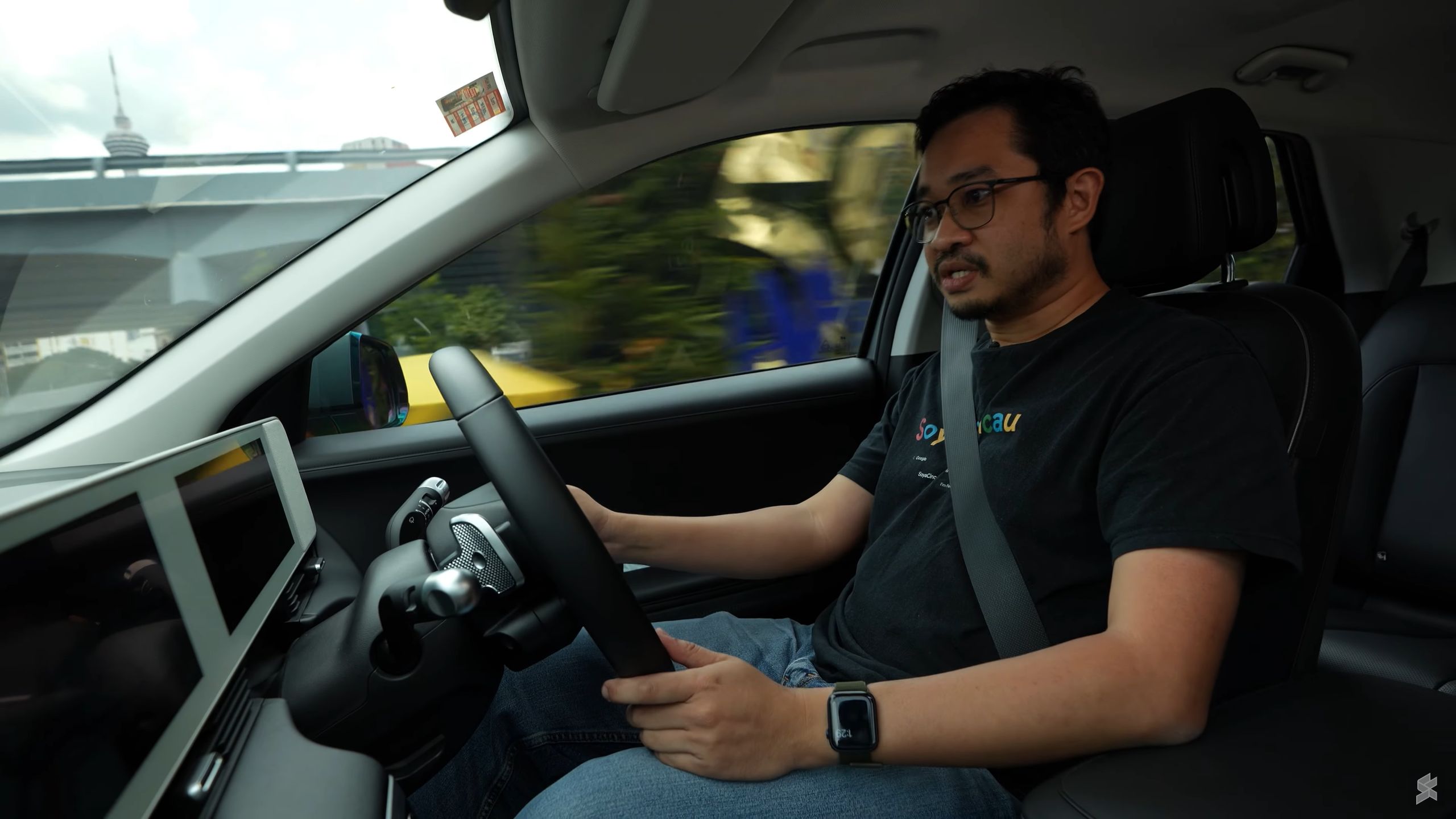
I didn’t manage to do an extensive long-distance drive for this review but based on my normal driving habits between work and home, the Ioniq 5 is pretty efficient for an EV that weighs over 2 tonnes. With average speeds between 80 to 100km/h across a distance of 25km with i-Pedal mode, I’m getting about 14.3 to 15.5 kWh per 100km according to the car’s energy readout. That’s slightly better than the claimed mileage figure (430km range from 72.6kWh battery on WLTP cycle) which calculates to about 16.88 kWh per 100km.
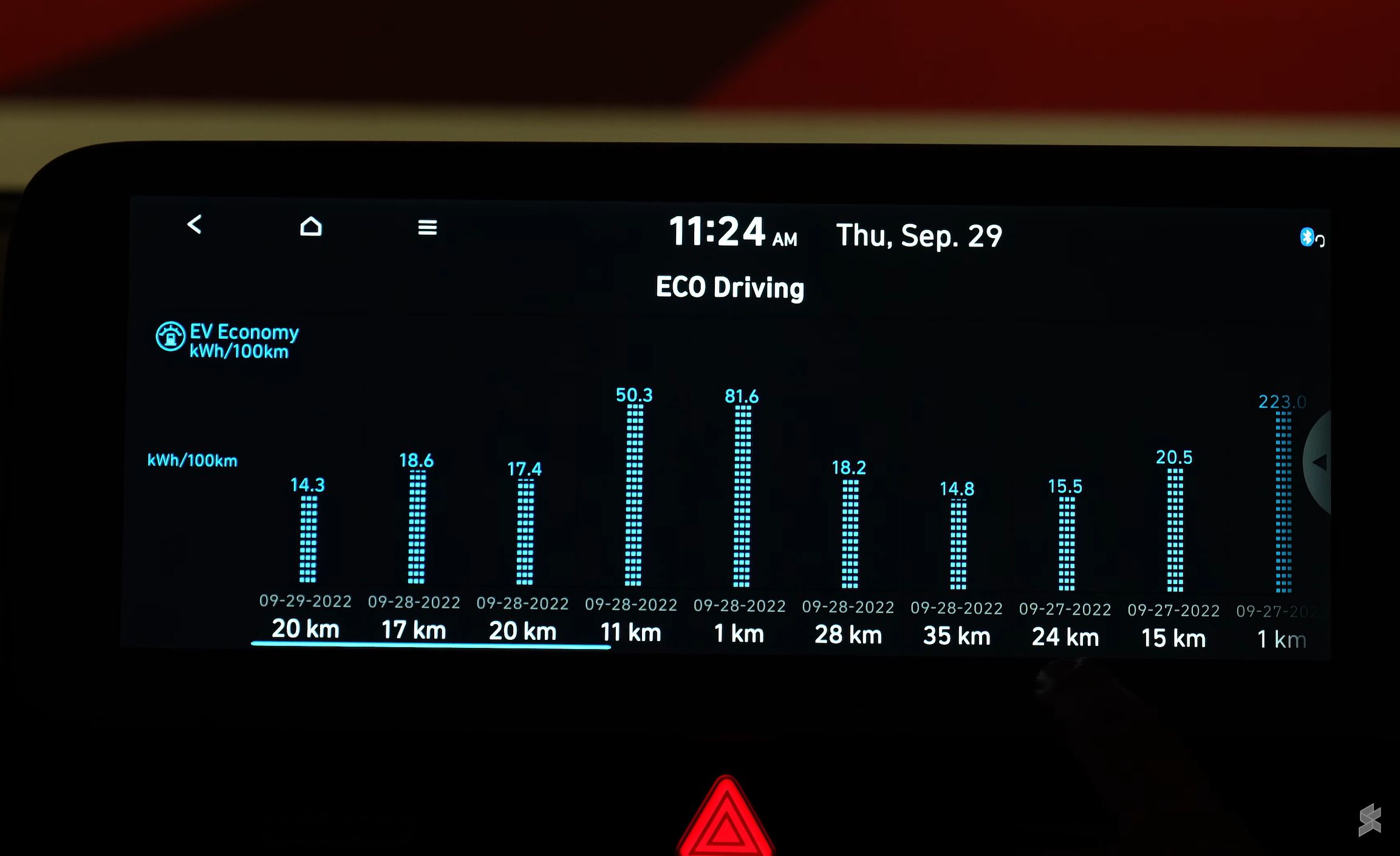
With more spirited driving and occasional speeding over 100km/h, the power usage increases to about 18 to 20 kWh per 100km. That calculates to about 360km of range on a full charge. Obviously, it uses more energy if you drive at higher speeds so it’s best to keep it under 100km/h if you want to maximise your range for long-distance drives.
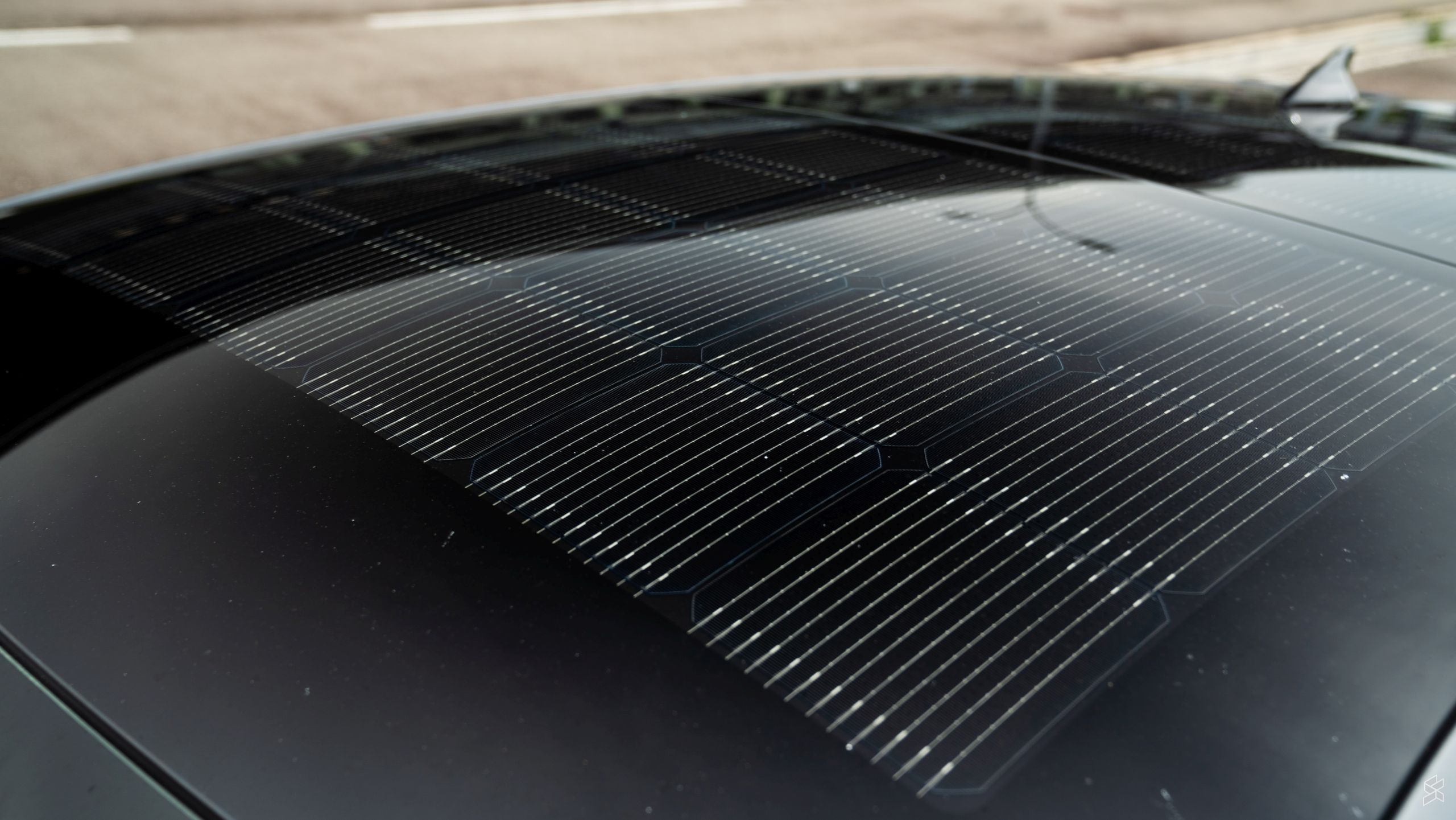
According to Hyundai’s brochure, the solar roof on the Ioniq 5 Max can help generate extra electricity which can be stored on both the 12V starter battery and the high-voltage battery. Does it really work? Well, I can’t really tell to be honest.
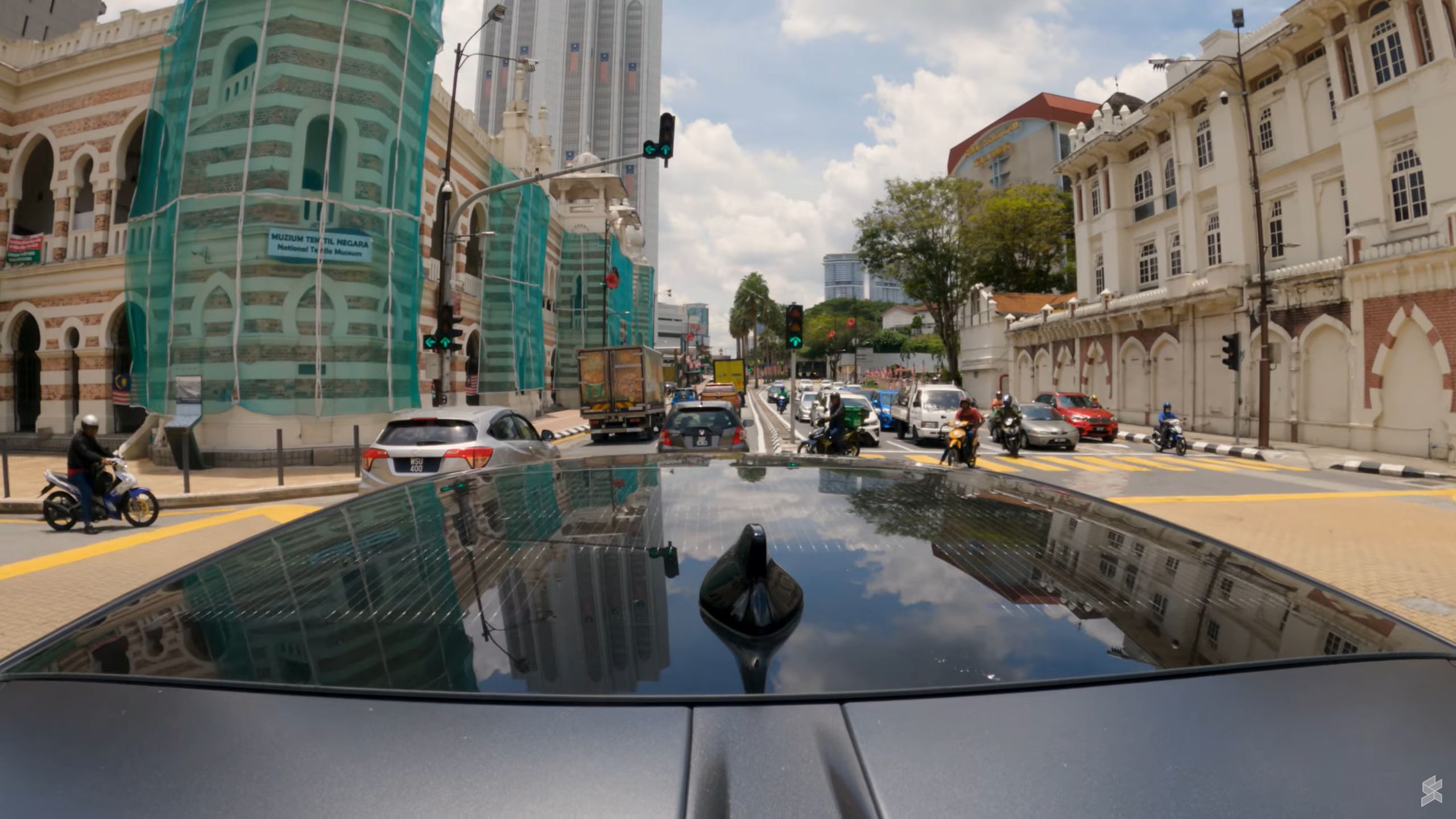
In this review car which has done over 10,000 km, the solar roof has generated slightly over 32kWh, which is less than half of the total battery capacity. With some rough calculation, that’s about 3.2Watt hour saved for each kilometre driven, which doesn’t sound like a lot. Perhaps the solar roof can generate more power if you were to park the car under direct sunlight daily, but seriously, why would you wanna do that for a car that costs nearly RM300,000.
Using the Ioniq 5 as a powerbank
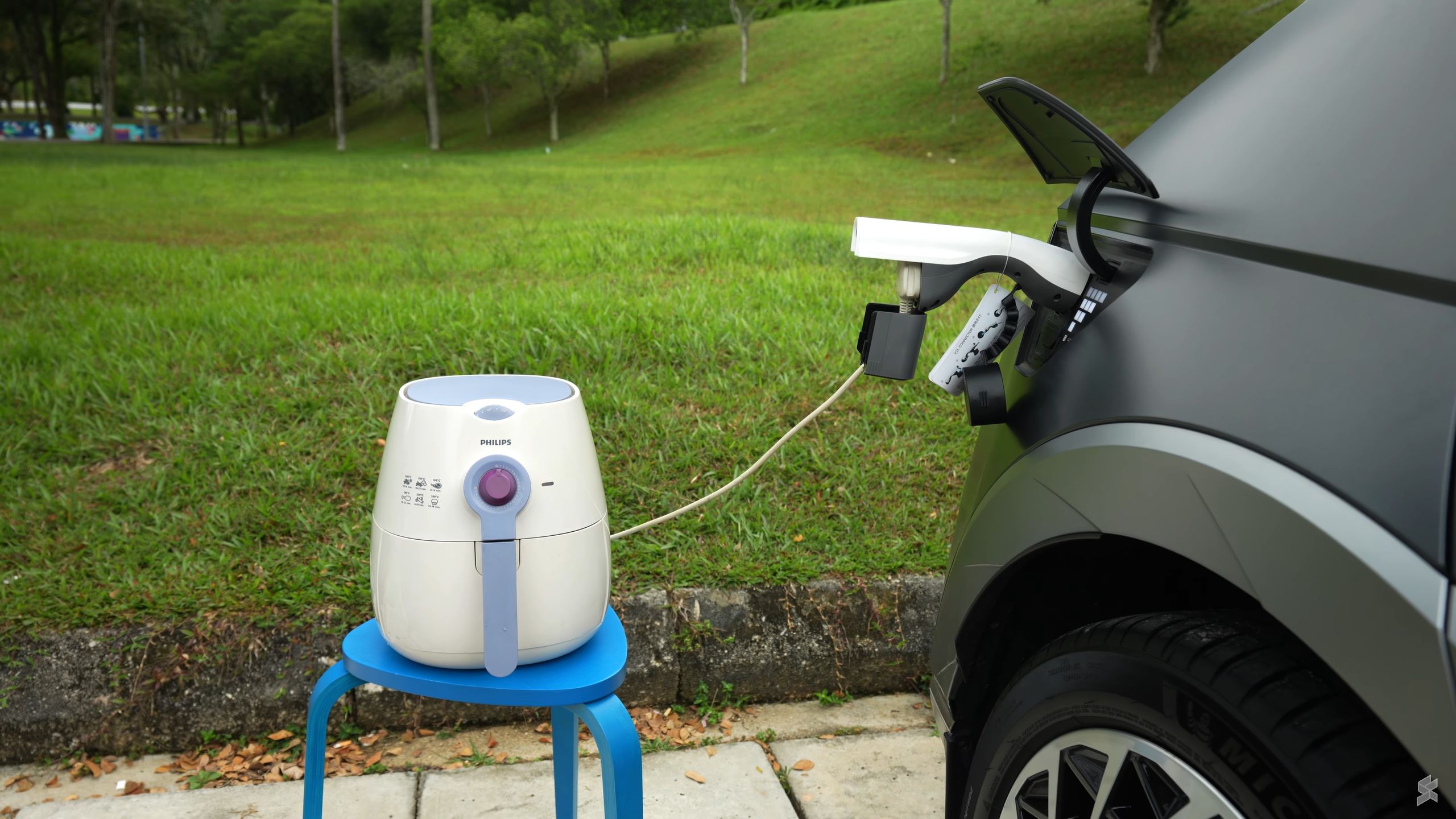
The giant battery on the Ioniq 5 also doubles up as a huge power bank which can power your electrical appliances. Underneath the rear seats, you’ll find a 3-pin socket to which you can hook up your laptop charger and other electronics. On the outside, the main charging port can also be used to power up more appliances or even help to charge a stranded EV.
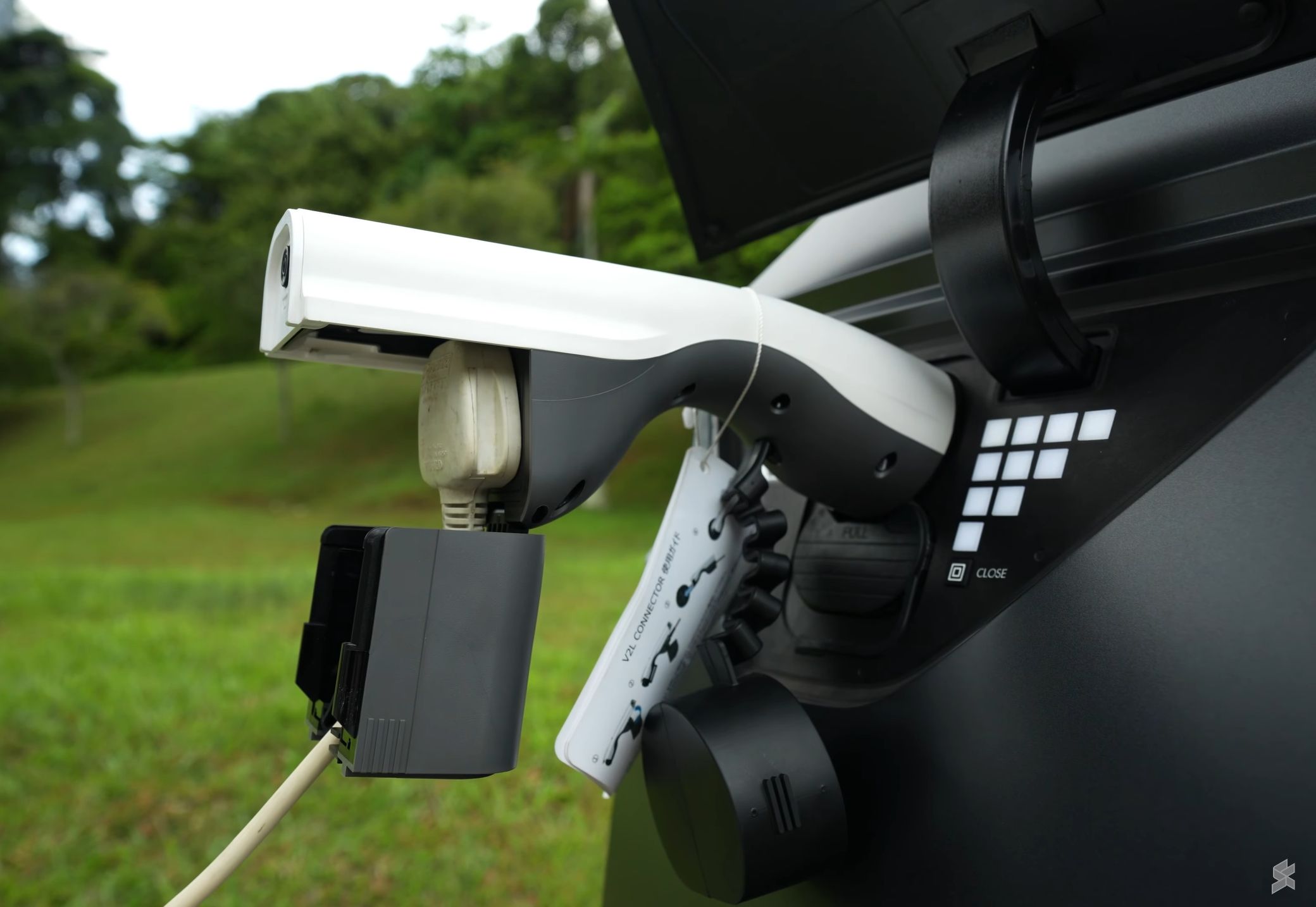
To use the vehicle-to-load function on the external port, just plug in the V2L (Vehicle to Load) adapter, open up the cover, plug in your appliance and press the power button. We managed to fry a good portion of chicken nuggets with an air fryer for 25 minutes without any issues.
This is great for camping trips or when there’s a blackout in your home. The V2L function supports up to a maximum of 3600W and you can view the real-time usage from the information cluster.
Everything you would want from an EV for under RM300,000 but there’s just one problem
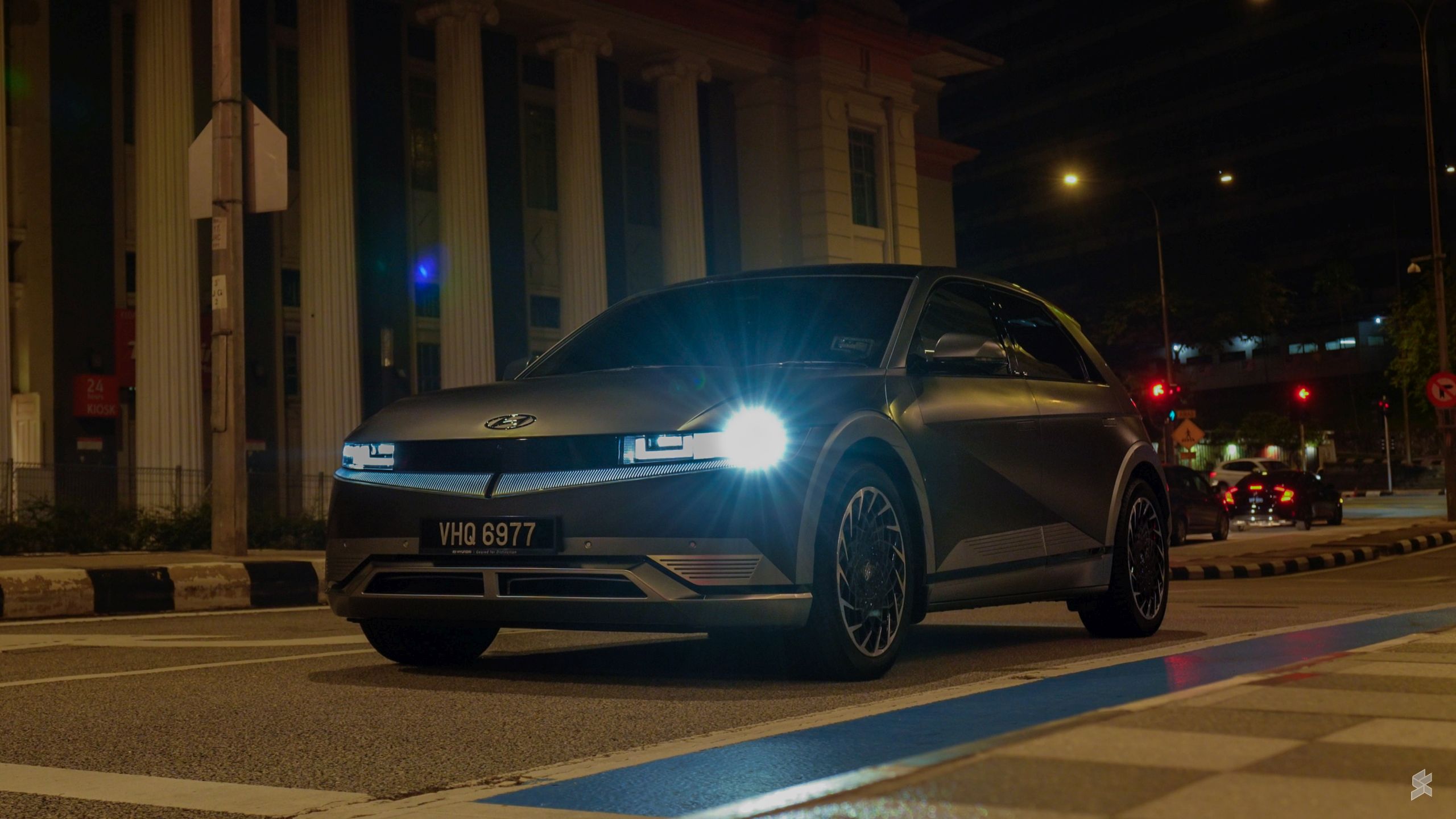
Looking at the options available in Malaysia, the Hyundai Ioniq 5 ticks all the right boxes if you’re in the market for a brand-new EV under RM300,000. It has a unique head-turning design, powerful twin motors, ample space for rear occupants and it rides comfortably as a family car. On top of that, you get all the safety features plus the extra convenience of the V2L feature.
To recap, there are a total of 3 variants for the Ioniq 5. The lower two versions, the Lite (RM207,808) and Plus (RM238,408) come with a smaller 58kWh battery that has a shorter range of 384km on a single charge. They also come with a single motor at the rear which pushes 168hp and 350Nm of torque. The 0-100 times are also slower at 8.5 seconds but they also have the same top speed of 185km/h as the Max variant.
This top-spec Max version with two motors and a larger 72kWh battery costs RM270,408. That’s about the same price as the Volvo XC40 EV. Although the XC40 has 100 extra horses, it is a much smaller SUV and it comes with a couple of compromises since it isn’t using a pure EV platform.
As standard, HSDM is only offering the Ioniq 5 a two-year or 50,000km warranty, along with an 8-year or 160,000km warranty for the battery pack. However, you can get an extended warranty of 5 years plus a service package for an additional RM10,000.
The only problem with the Ioniq 5 right now is stock availability as Hyundai is struggling to make enough units to meet global demand. If you want one, the current estimated waiting time is approximately 18 months for the Ioniq 5 Max in Malaysia. This is due to a global supply issue and in some markets, the Ioniq 5 is sold out in minutes through an online “fire sale”.
Related reading
- Volvo XC40 EV review Malaysia: It’s great, but the infrastructure just isn’t there yet
- Hyundai Kona electric review: What’s it like to live with in Malaysia? We drove 800km to find out
- SoyaCincau’s Malaysian EV Buyer’s Guide – May 2022 Edition
- Celcom is giving away a Hyundai Ioniq 5 EV, here’s how to stand a chance to drive one home

